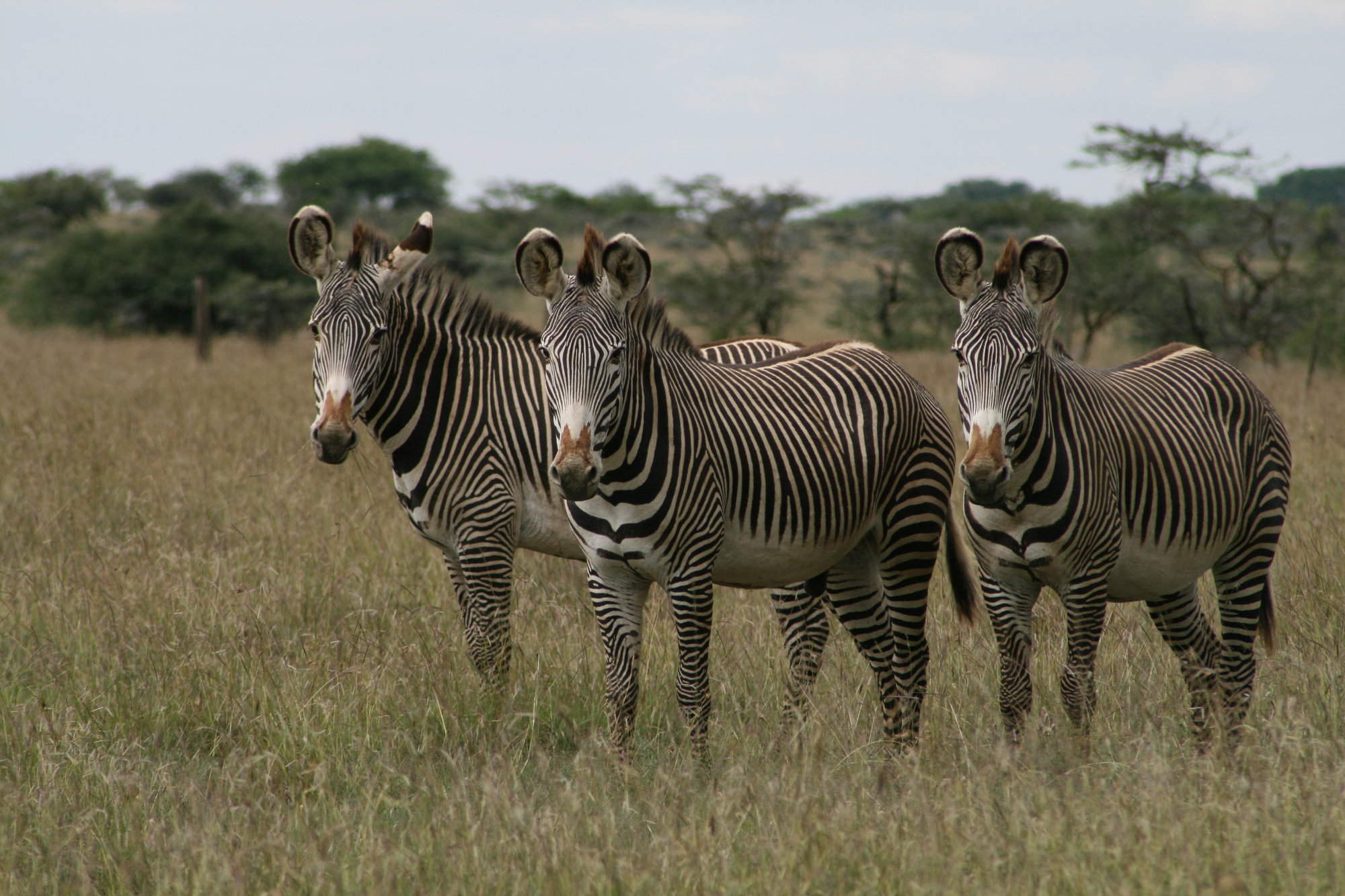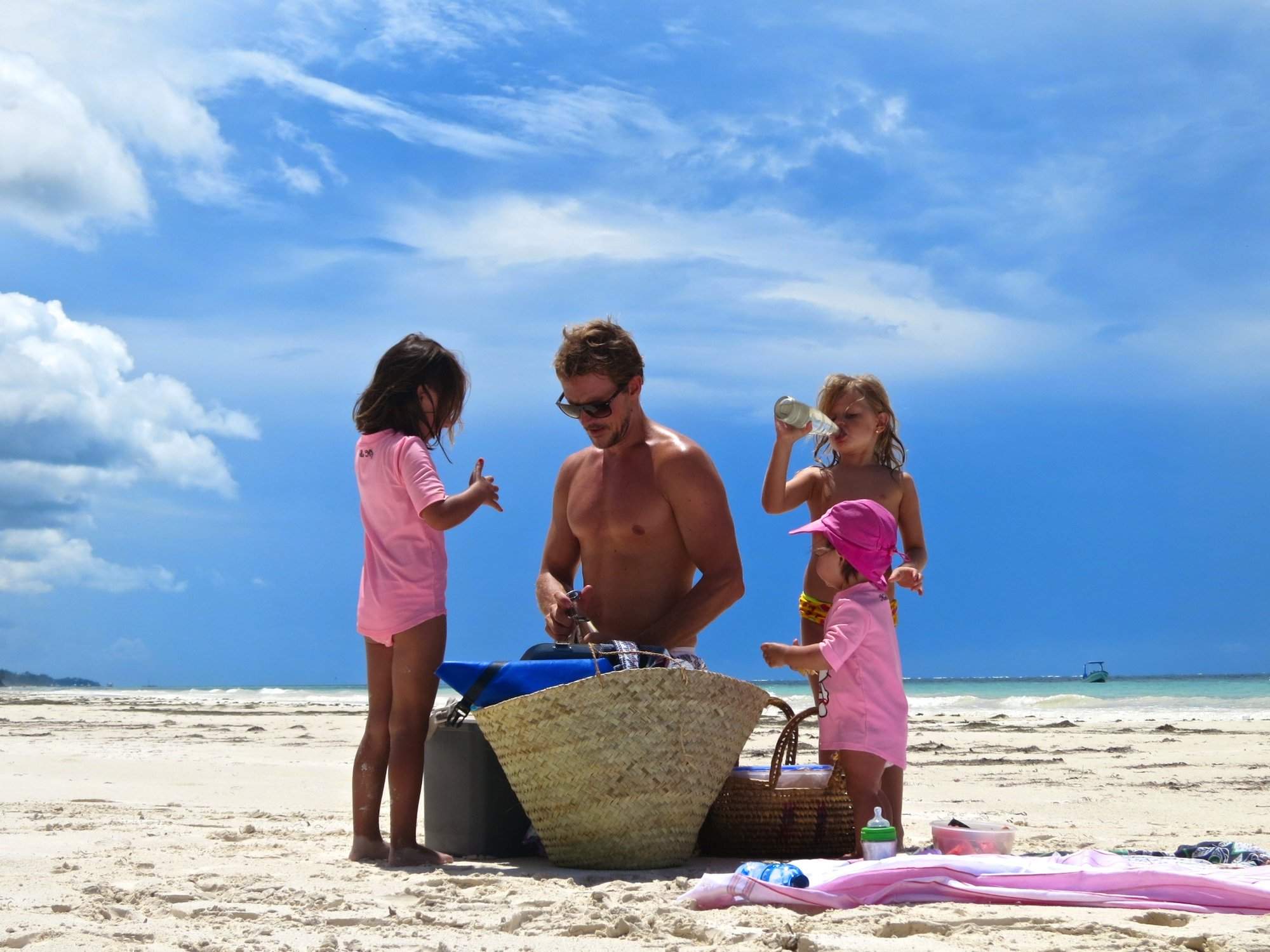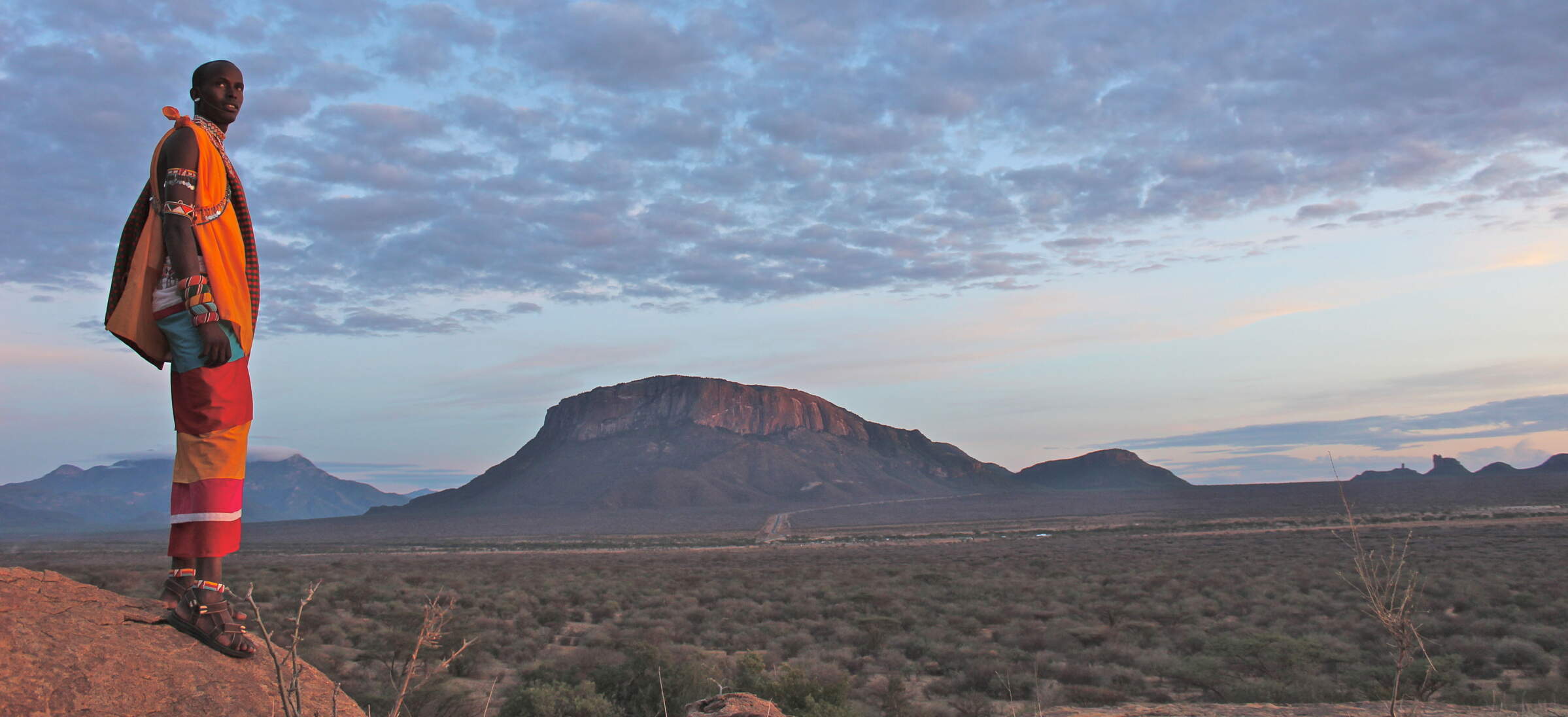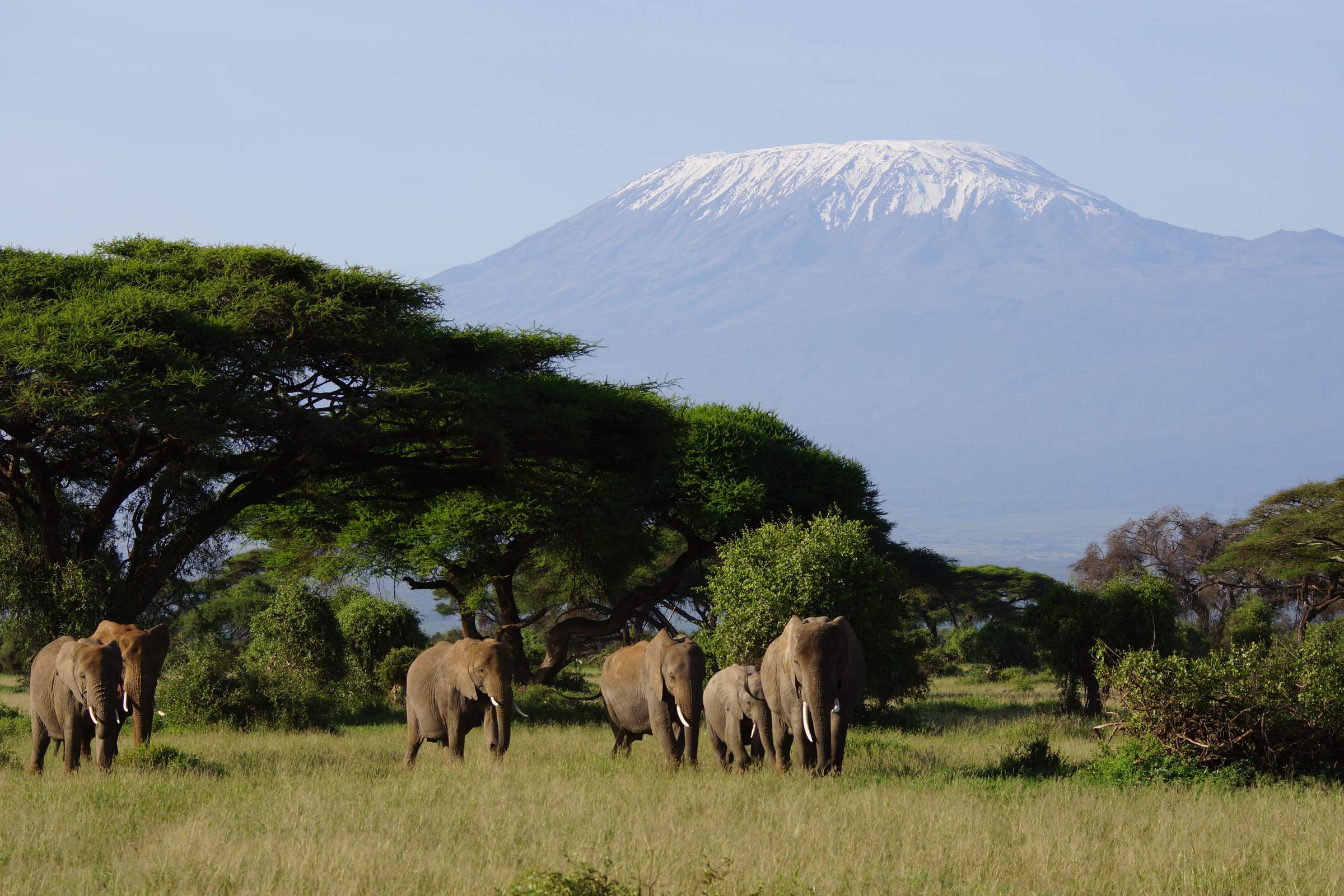
The conservancies are exclusive to their guests...
...bush walks...
Most of the camp staff come from the region’s Maasai communities.
You will often see no other vehicles around you...
Maasai Mara Conservancies
Maasai Mara Conservancies
Around the boundaries of the Mara Reserve, Maasai livestock lands have become exclusive, wildlife sanctuaries.
Although it might seem an obvious partnership, with benefits for all sides, conservancies were first tried in the region as recently as 2005, having been pioneered at Selenkay near Amboseli in 1997. There have, however, been positive developments in the Mara almost every year since then, with one large bush district after another converting from cattle-grazing to safari tourism and conservation.
Sometimes the Maasai retain limited livestock-grazing rights in these areas, and particularly in the corridors between them – and there are small islands of resistance here and there, where a landowner has done a private deal, or ‘forgets’ he is not supposed to be grazing his livestock beyond the agreed invisible boundaries.
Minor teething troubles aside, however, the conservancy model has been a massive success – so much so that the wildlife is often more prolific in the conservancies outside the Maasai Mara National Reserve than inside it.
As livestock-grazing is far from unknown in the National Reserve in any case – and there is busy tourist traffic in much of it, especially in the migration season and peak holiday periods – there is evidence that the wildlife is steadily adjusting to the fact that the bushier, less visited lands to the north and east are also relatively safe havens, where humans pose only a limited threat and the natural environment is increasingly returning to a state of healthy balance.

Safaris visiting Mara Conservancies
Just ideas, we'll always tailor-make a trip for you

Striped Hyena Safari
5 days • 3 locations
NAIROBI AIRPORT TO NAIROBI AIRPORT
Just one example of a possible itinerary for keen walkers, this safari enables you to experience the sounds and sights of the bush, and its wildlife, in an unusually direct way.
US$5,700 - US$6,990 per person

African Hawk-Eagle Fly-in Safari
7 days • 2 locations
NAIROBI AIRPORT TO NAIROBI AIRPORT
Two luxurious camps provide relatively quiet game-viewing within Laikipia and the Mara ecosystem. Situated on private conservancies, both Lewa Wilderness and Naboisho offer the chance to sight all of the "Big 5" and to enjoy a range of safari activities.
US$9,360 - US$16,430 per person

Hamerkop Fly-In Safari
8 days • 2 locations
NAIROBI AIRPORT TO NAIROBI AIRPORT
Different wildlife, contrasting camps and a whole host of activities, this is a safari for those wanting to get out and about and not just sit in a vehicle.
US$7,120 - US$10,960 per person

Tawny Eagle Fly-in Safari
7 days • 2 locations
NAIROBI AIRPORT TO NAIROBI AIRPORT
Explore Laikipia and the Maasai Mara ecosystem with stays in the Ol Pejeta and Naboisho conservancies. Two smart yet authentically rustic bush camps provide a traditional safari experience, offering a high standard of guiding and excellent level of care.
US$4,560 - US$8,630 per person

Purple Grenadier Fly-In Safari
6 days • 2 locations
NAIROBI AIRPORT TO NAIROBI AIRPORT
Fantastic guiding from intimate, well-run mid-range tented camps, in superb conservancy locations: this safari is all about making the most of the incredible wildlife in Laikipia and the Maasai Mara.
US$5,680 - US$7,130 per person

Black Kite Fly-in Safari
10 days • 4 locations
NAIROBI AIRPORT TO NAIROBI AIRPORT
Explore Kenya in-depth with visits to Nairobi and Meru national parks, the Mara Conservancies and Amboseli. Nestled in remoter regions, four camps provide fantastic access to rich game, a range of activities and beautifully diverse landscapes.
US$10,000 - US$11,960 per person

African Finfoot Fly-in Safari
7 days • 3 locations
NAIROBI AIRPORT TO NAIROBI AIRPORT
After a unique start in Nairobi National Park, classic, luxurious camps combine for a high-end and exclusive safari in fantastic wildlife destinations.
US$11,230 - US$17,340 per person
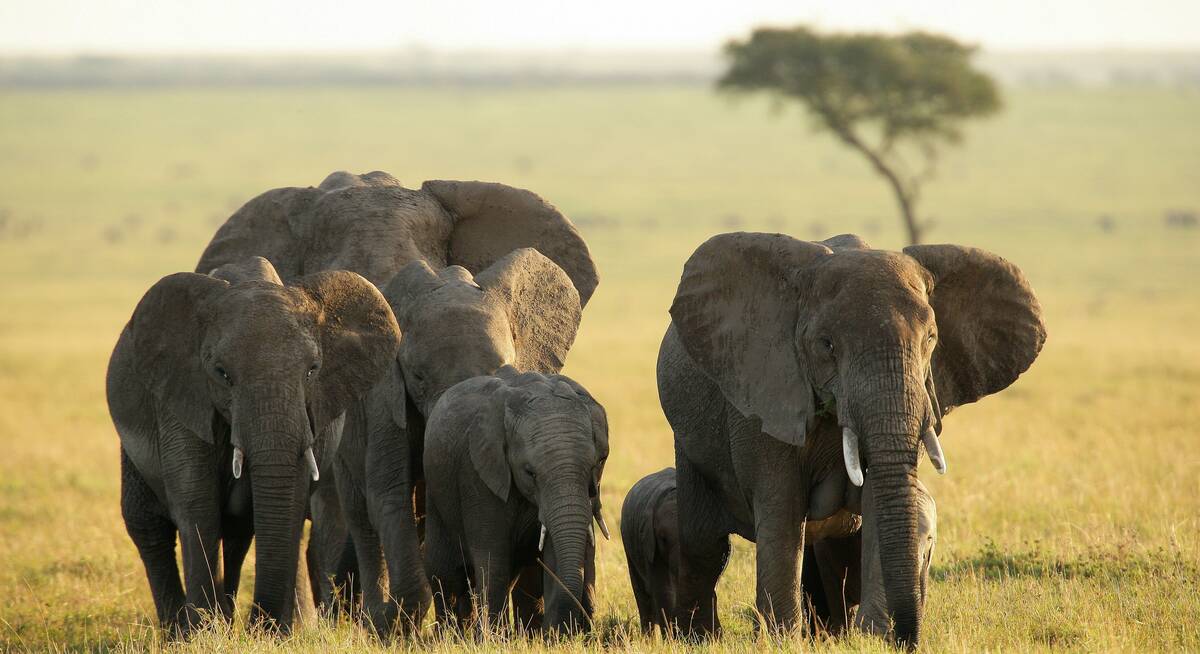
Peregrine Falcon Fly-In Safari
6 days • 2 locations
NAIROBI AIRPORT TO NAIROBI AIRPORT
Discover two of Kenya’s quieter wildlife havens with visits to Meru National Park and Mara North Conservancy. Top-quality sister camps provide considerable comfort and a range of activities by which to explore the game-rich surroundings.
US$7,840 - US$8,980 per person
Most recent reviews of our safaris to Mara Conservancies
Click below to browse all 392 reviews from Maasai Mara Conservancies. All from our travellers; all are in full & unedited.
Arrived 25 Oct 2024, 17 nights
"My Oct 2024 trip"
Overall rating: Excellent
Arrived 8 Dec 2024, 9 nights
"My Dec 2024 trip"
Overall rating: Excellent
Arrived 8 Nov 2024, 12 nights
"Great way to see Africa"
Overall rating: Excellent
Arrived 22 Oct 2024, 8 nights
"My Oct 2024 trip"
Overall rating: Excellent
Arrived 17 Nov 2024, 14 nights
"My Nov 2024 trip"
Overall rating: Excellent
Arrived 4 Oct 2024, 11 nights
"My Oct 2024 trip"
Overall rating: Excellent
Arrived 31 Oct 2024, 12 nights
"My Oct 2024 trip"
Overall rating: Excellent
Arrived 2 Nov 2024, 7 nights
"My Nov Kenya 2024 trip"
Overall rating: Excellent
Arrived 4 Oct 2024, 16 nights
"My Oct 2024 trip"
Overall rating: Excellent
Arrived 18 Oct 2024, 11 nights
"My Oct 2024 trip"
Overall rating: Excellent
Where to stay in Mara Conservancies
Our suggestions for safari camps in Maasai Mara Conservancies
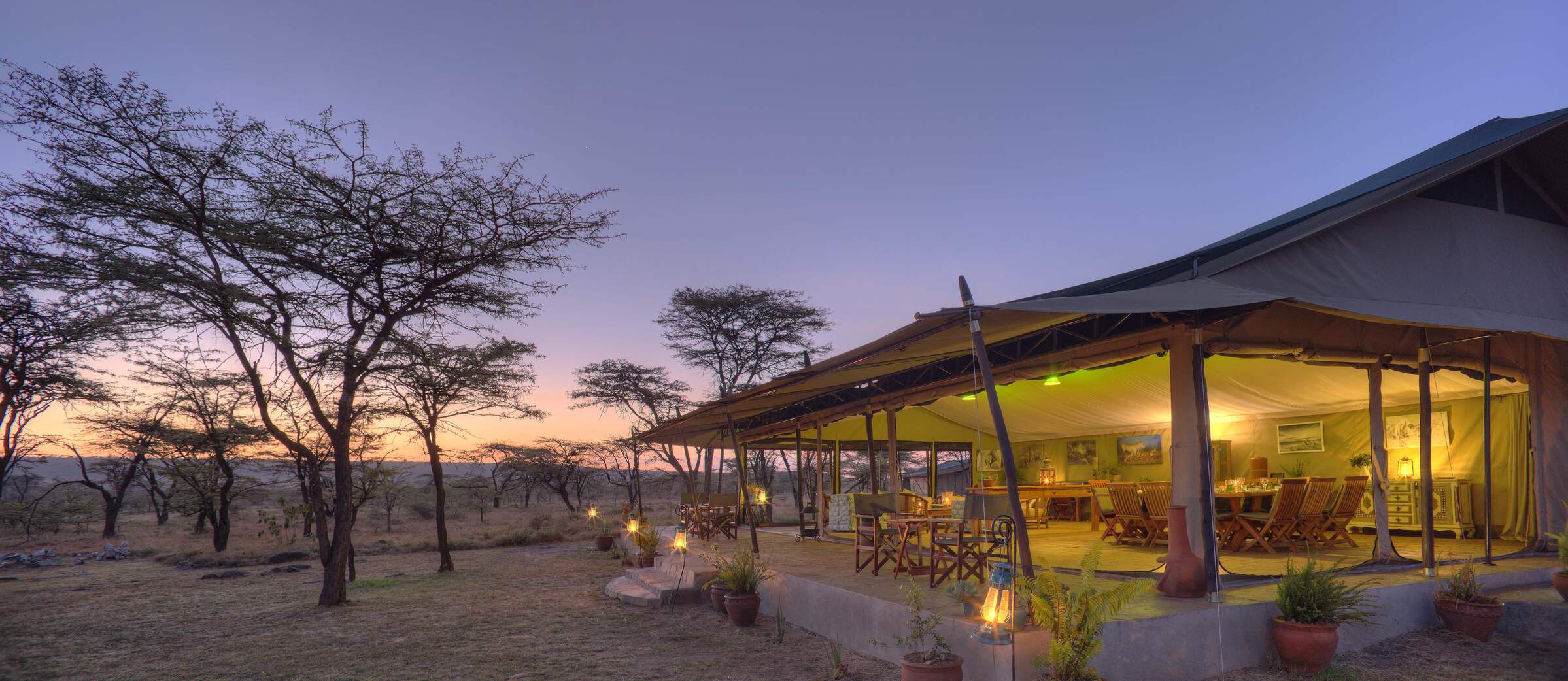
Kicheche Bush Camp
Kicheche Bush Camp is a smart and intimate tented camp with a relaxed atmosphere and the perfect base in the Mara for keen photographers.

Kicheche Mara
Kicheche Mara Camp has just ten tents and a rustic and comfortable feel. It is set by a stream in a pretty area of the Mara ecosystem's Mara North Conservancy.
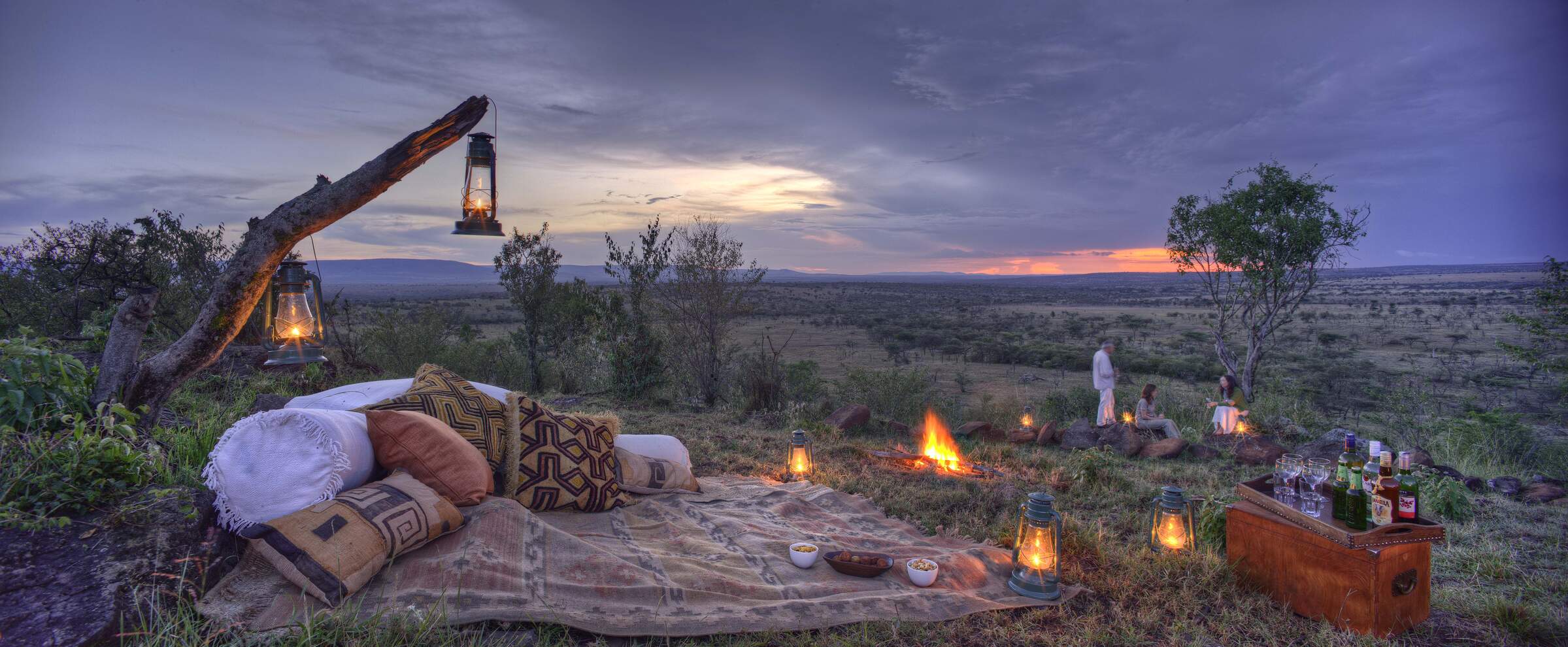
Kicheche Valley
Kicheche Valley is a boutique tented camp in a wooded district of the Mara ecosystem's Naboisho Conservancy, with plenty of wildlife in the area.
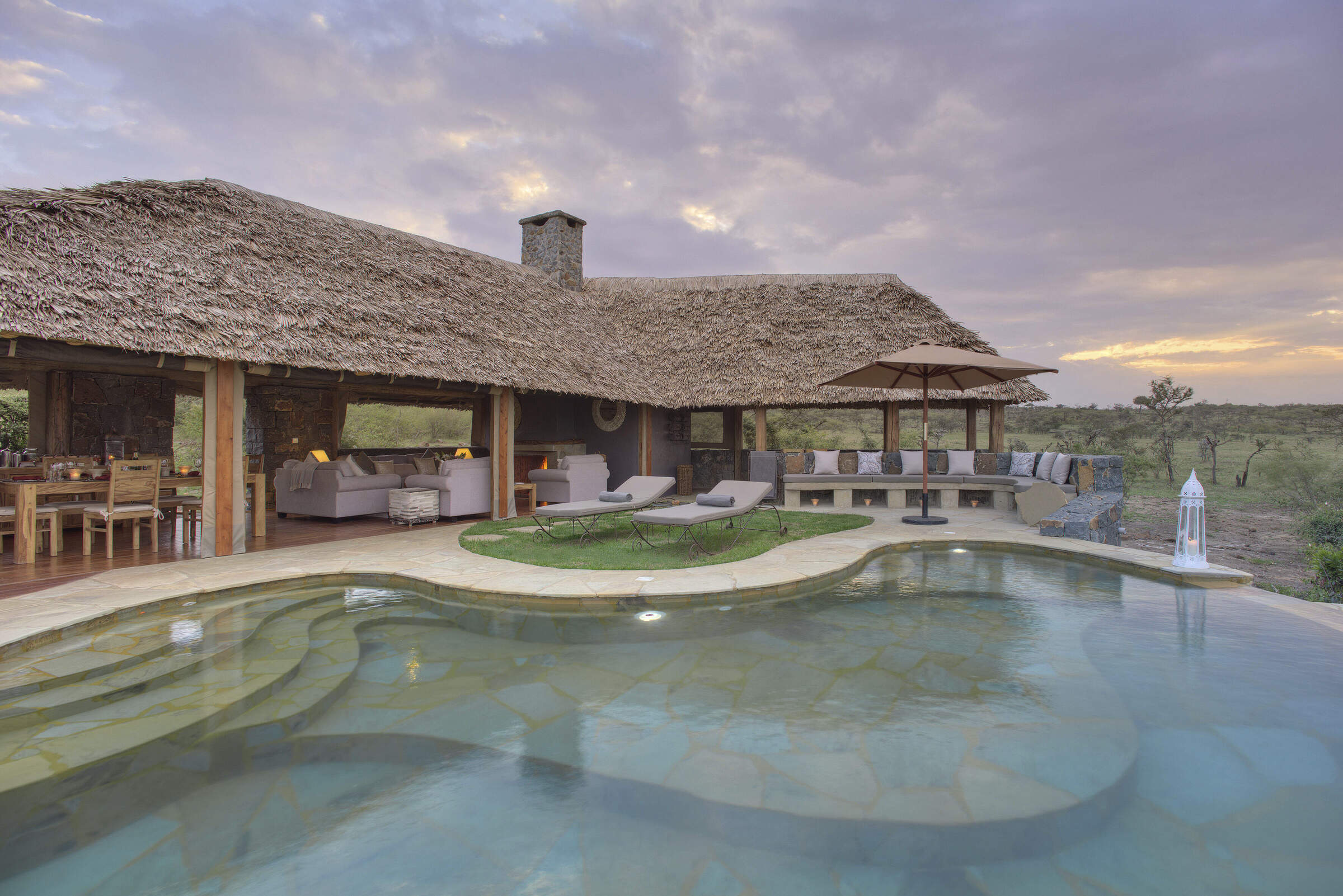
Naboisho Camp
Naboisho Camp is one of the most luxurious of the handful of camps in the Naboisho Conservancy. It offers day and night game drives, game walks and full creature comforts in the bush.
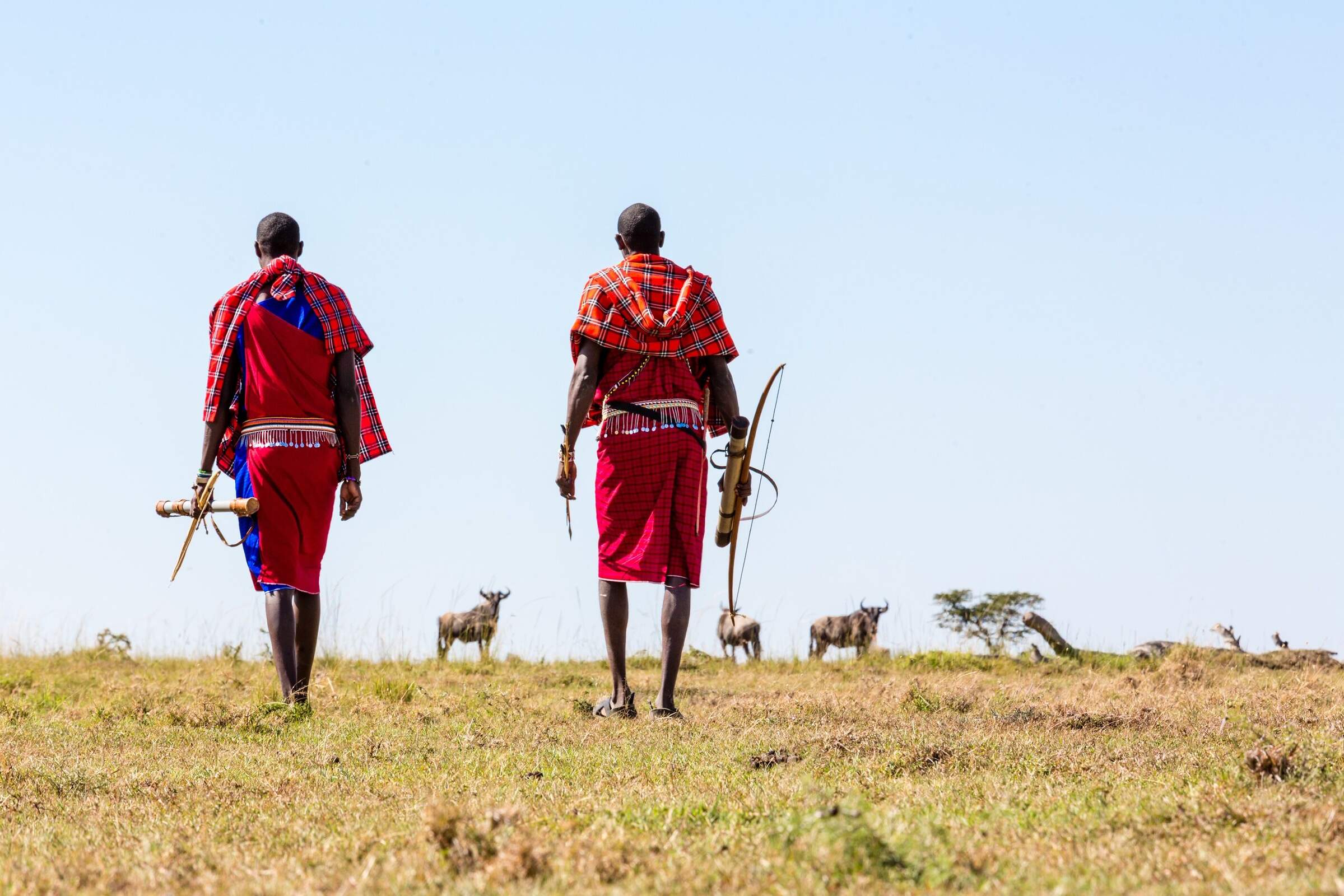
Offbeat Mara
Offbeat Mara is a small traditional camp that appeals to safari traditionalists, located in one of the Maasai Mara’s quiet conservancies.

Encounter Mara
Encounter Mara is located in the private Naboisho Conservancy – a game-rich area of the Mara ecosystem – and offers a contemporary take on the traditional, low-impact luxury safari camp.

Elephant Pepper Camp
Elephant Pepper Camp is a small 10-tent bush camp, put together in the traditional "campaign" style, and including a large honeymoon/family tent.
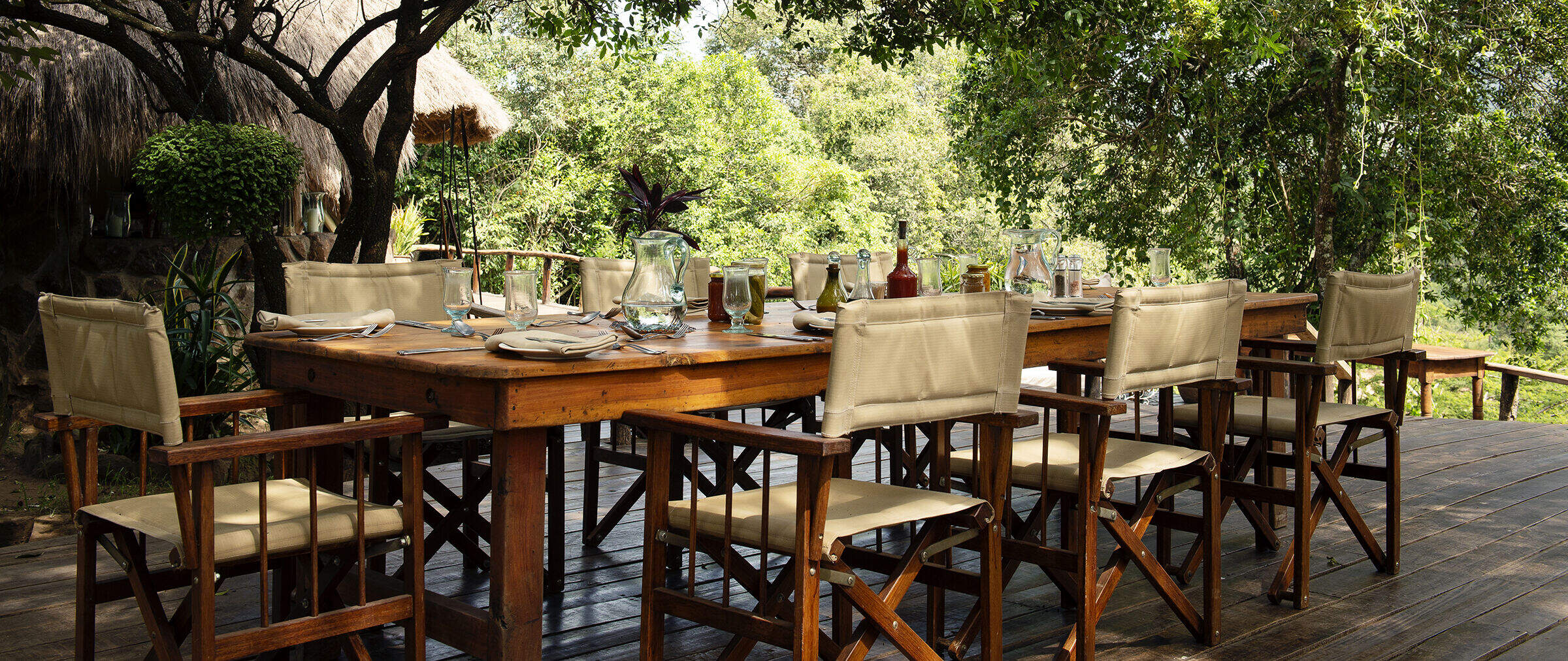
Serian
Serian is a luxury tented camp on the east bank of the Mara River in the Mara North Conservancy. It is the sister camp of Ngare Serian, on the west bank.
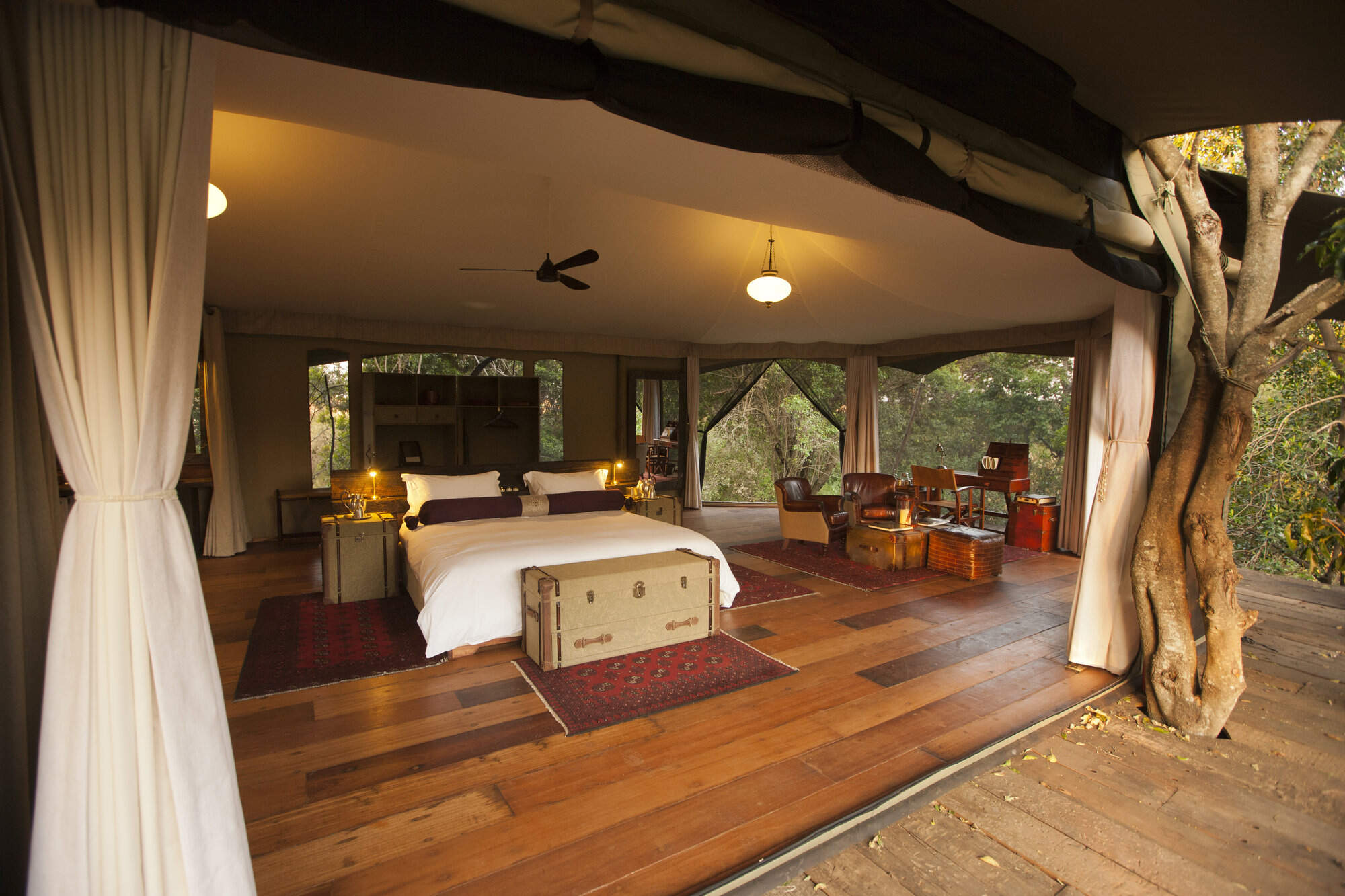
Mara Plains Camp
Mara Plains is one of the very best camps in the Mara ecosystem. Located in the Olare Motorogi Conservancy, just outside the Mara reserve, it has access to three wildlife-viewing areas.
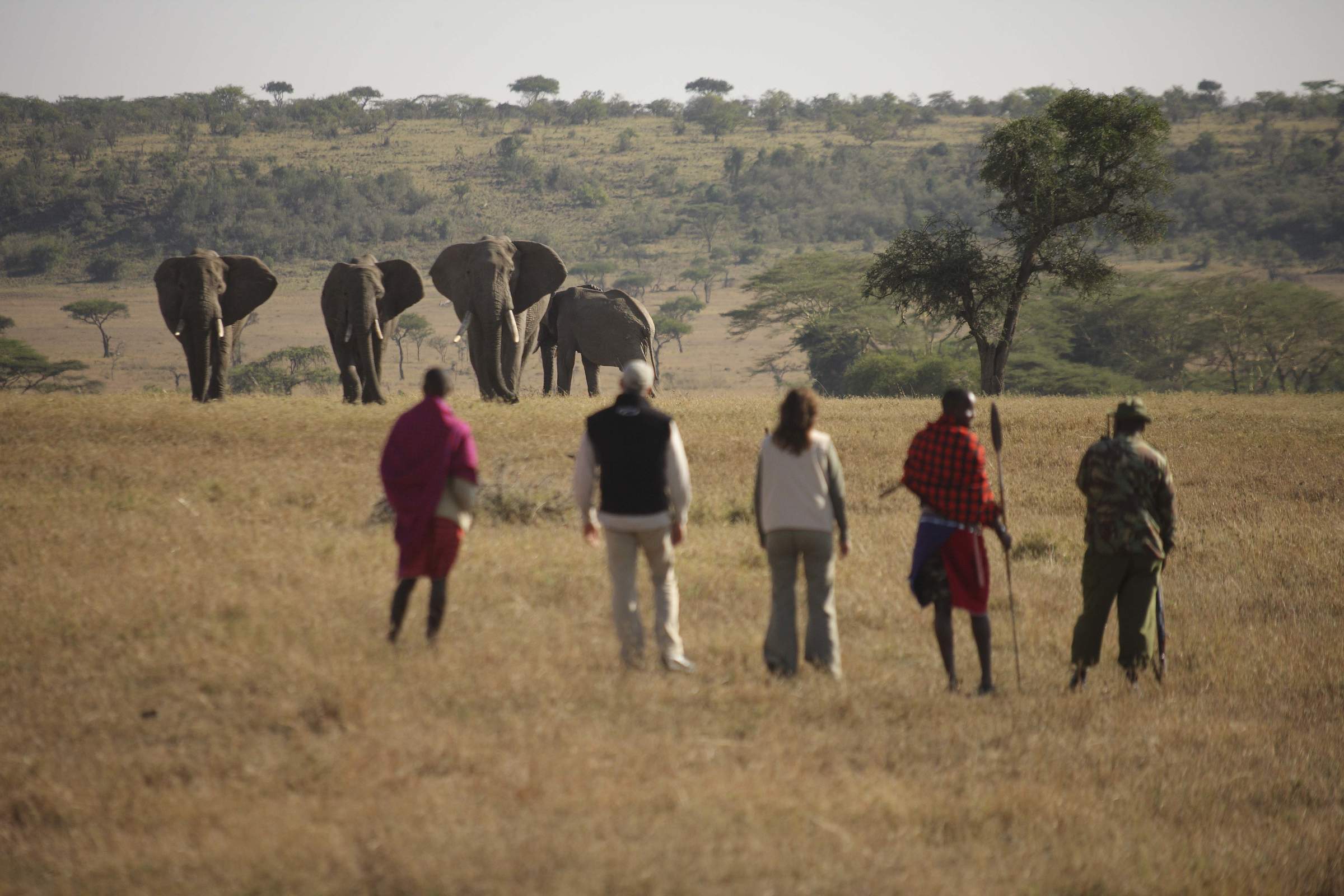
Kicheche Fly Camp
Kicheche Walking Wilderness Fly Camp is a temporaray dome tent camp set up for participants in Kicheche's two-day walking safari between Kicheche Valley and Kicheche Bush Camp.
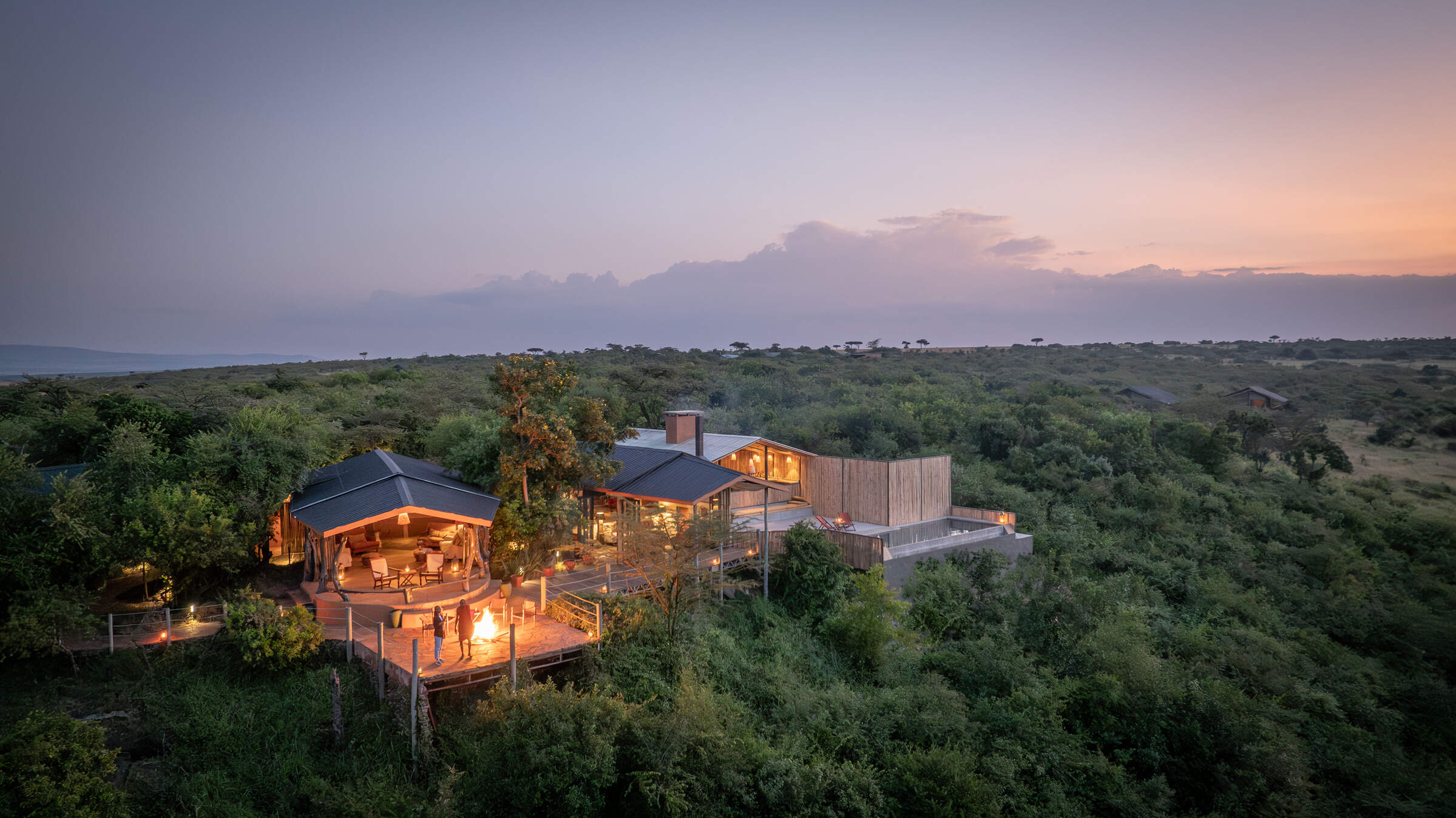
Basecamp Eagle View
Basecamp Eagle View is a community-focused safari camp in the Naboisho Conservancy, with a strong emphasis on responsible tourism and a spectacular location.
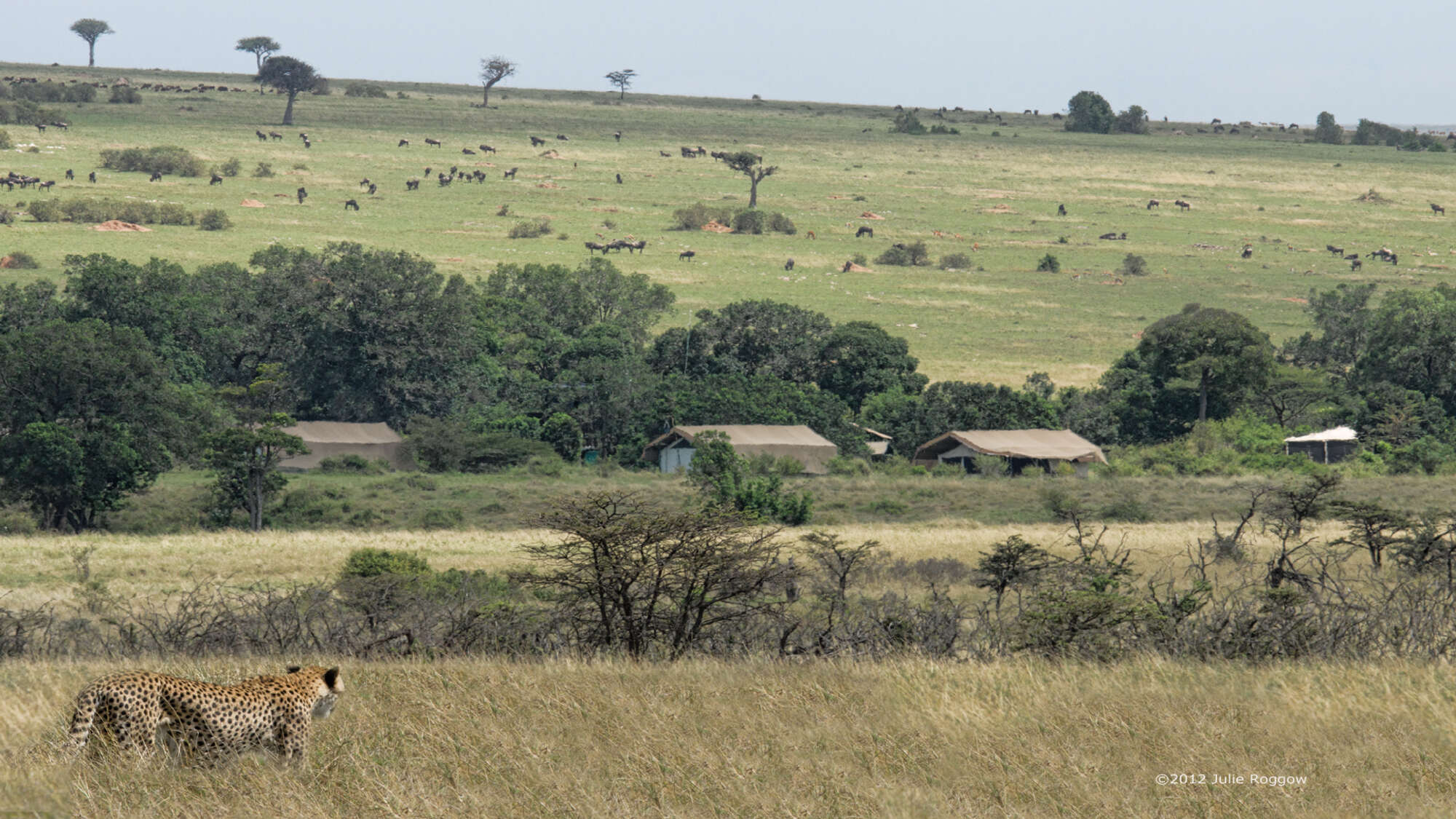
Porini Lion Camp
Porini Lion Camp is a pioneering, community focused eco-camp, with excellent guides and game viewing, in the predator-rich, Olare Motorogi Conservancy.
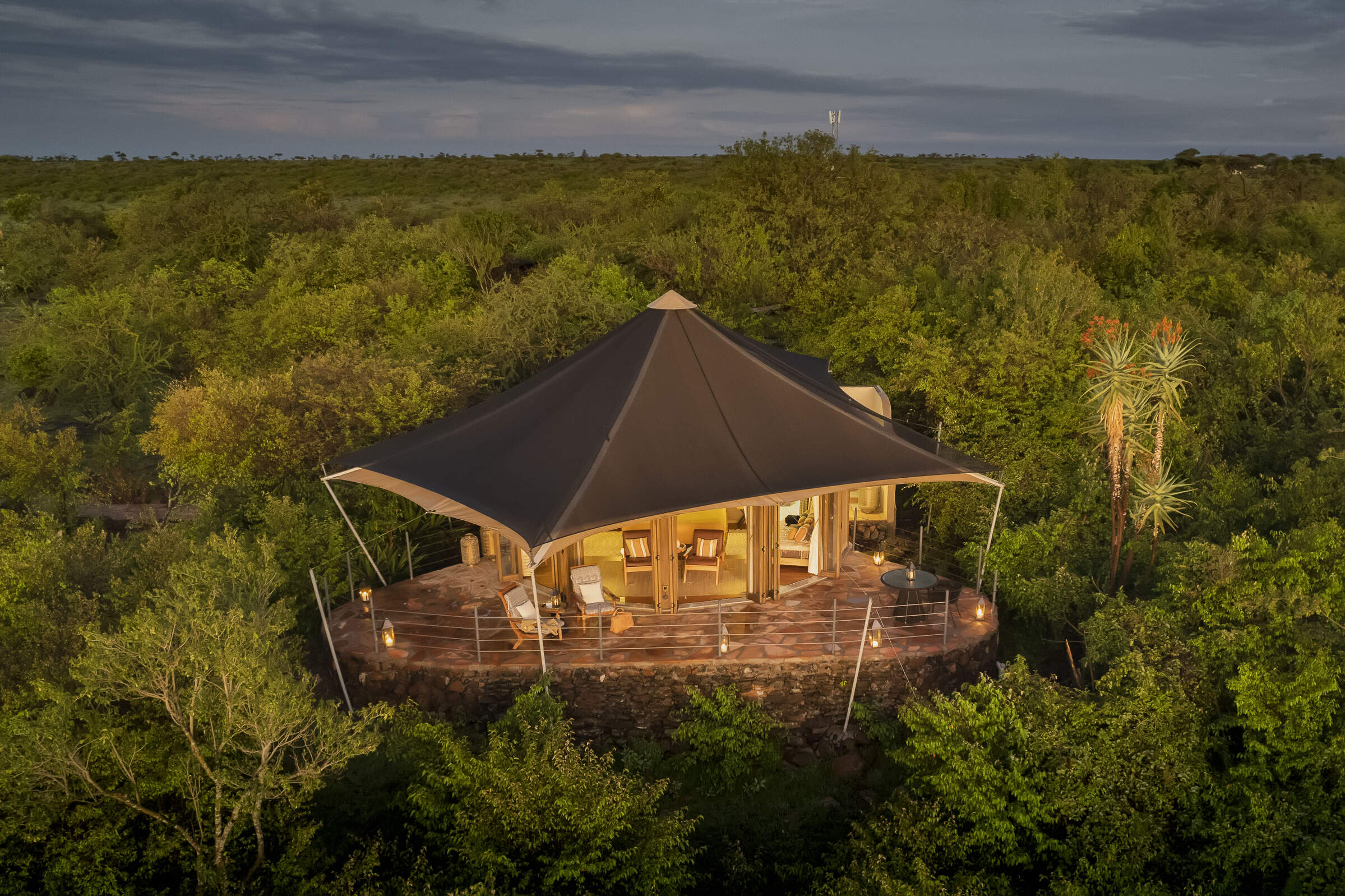
Hemingways Ol Seki
Magnificently located tented lodge on a bluff looking south across the Naboisho Conservancy toward the Maasai Mara National Reserve.
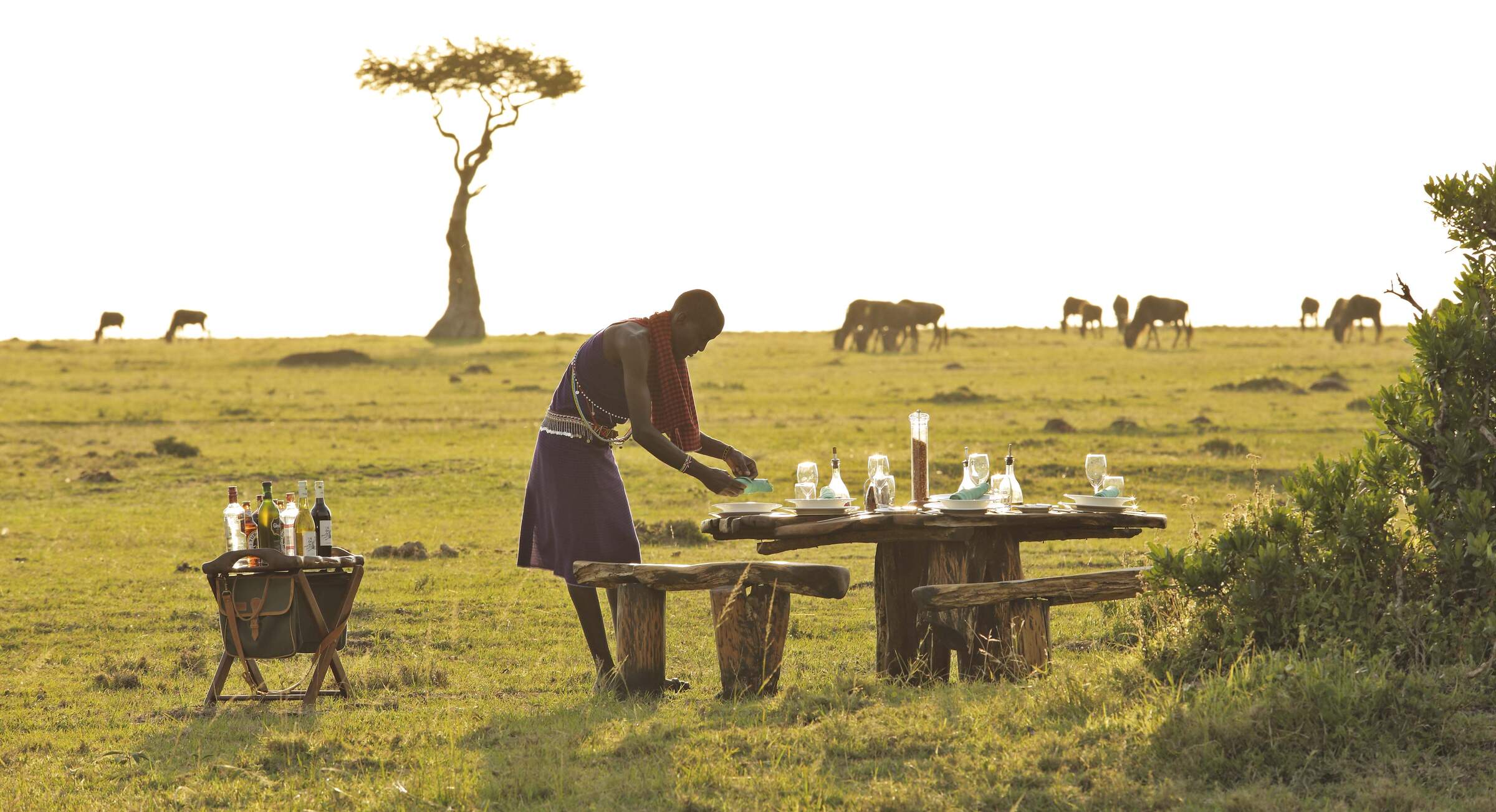
Saruni Wild
Saruni Wild is a rustic and traditional safari camp in the Lemek Conservancy, with just three tents and limited electricity.
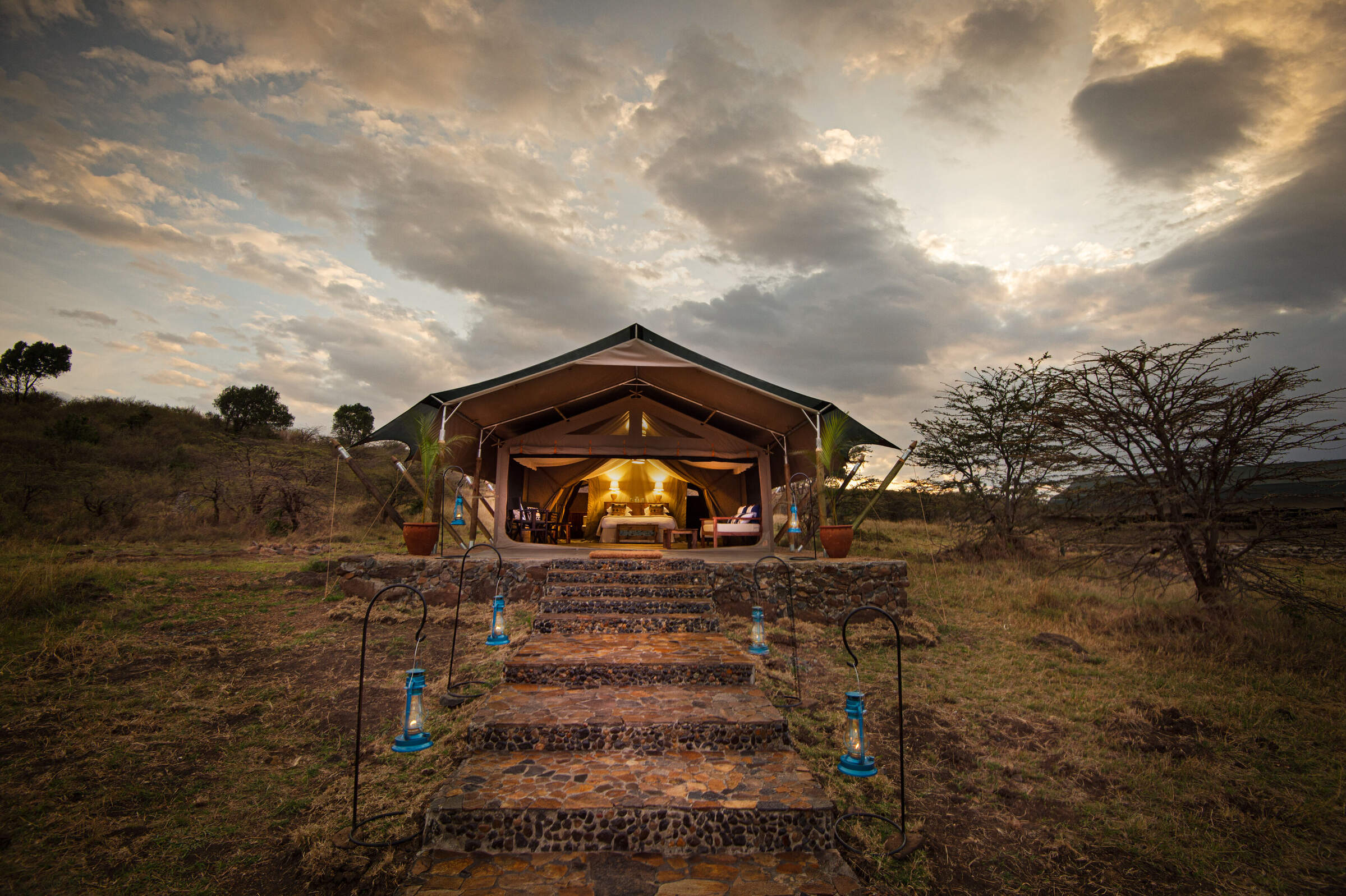
Offbeat Ndoto
Small and intimate, Offbeat Mara is set in a valley above the (often dry) Olare Orok River within the Mara North Conservancy.
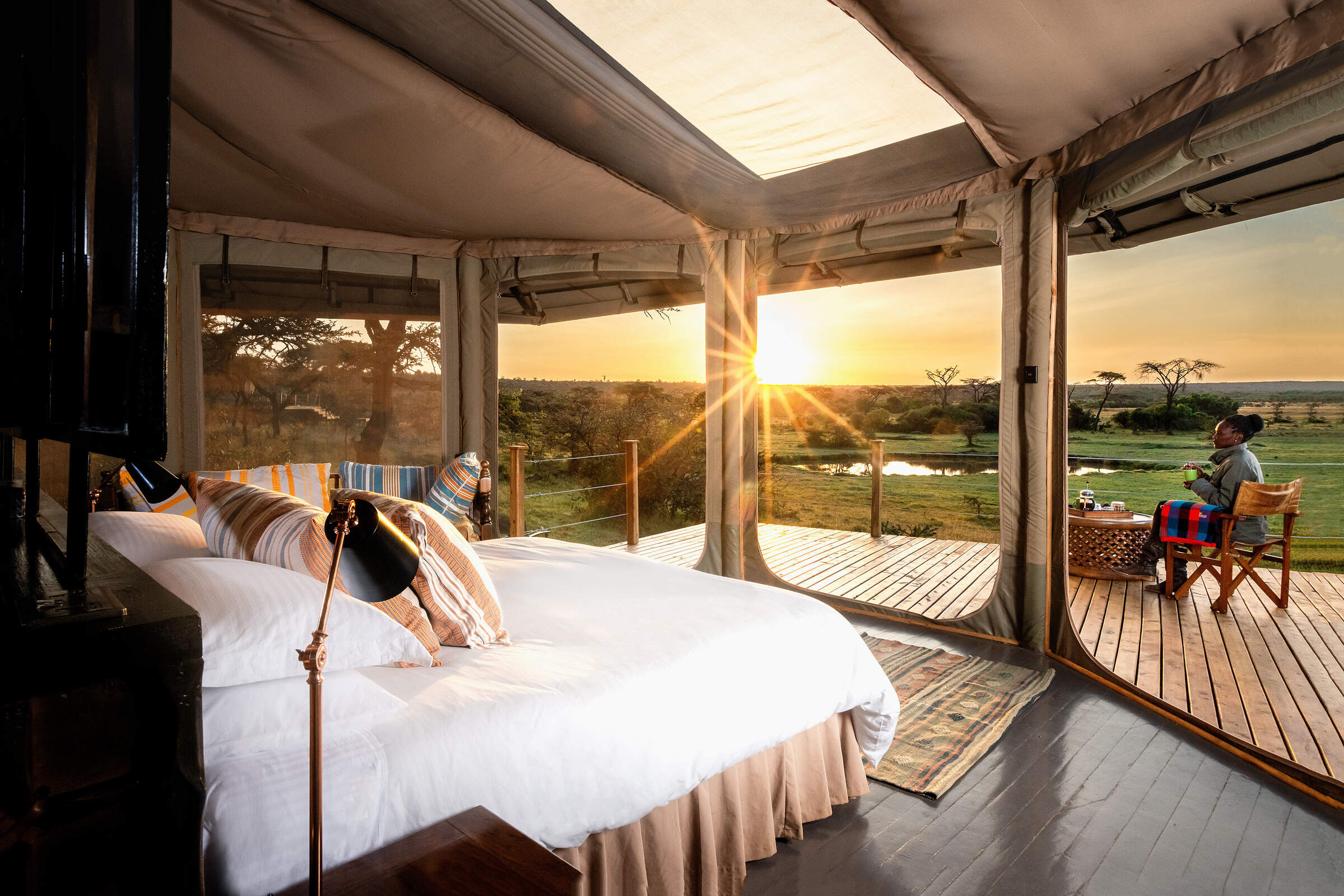
Basecamp Leopard Hill
With six beautiful tents, Basecamp Leopard Hill is a smart safari camp in the Naboisho Conservancy in the Maasai Mara ecosystem.
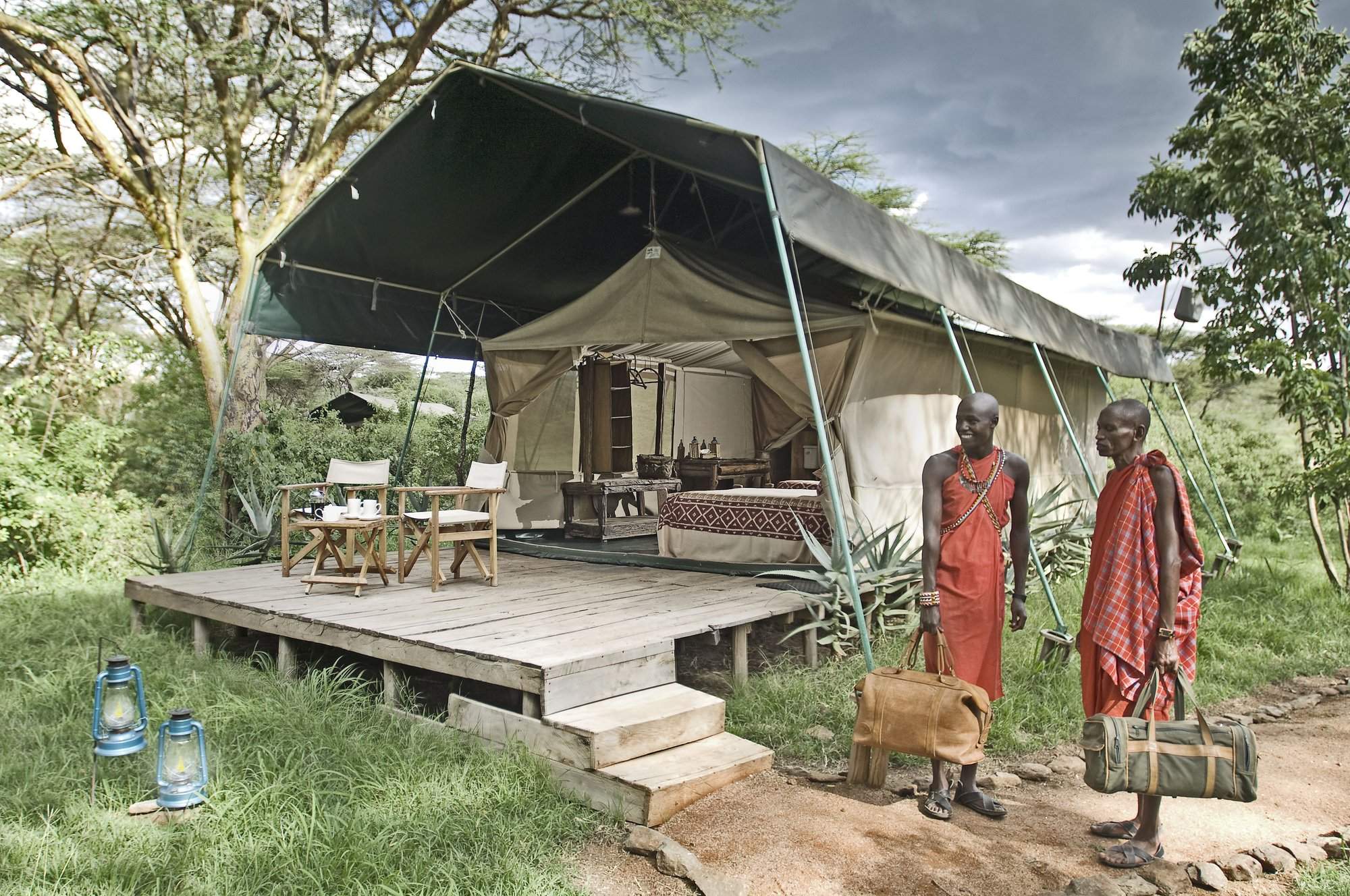
Porini Mara Camp
Porini Mara Camp is a small, pioneering eco-camp in the first private conservancy in the Mara region, with comfortable accommodation and a range of activities.
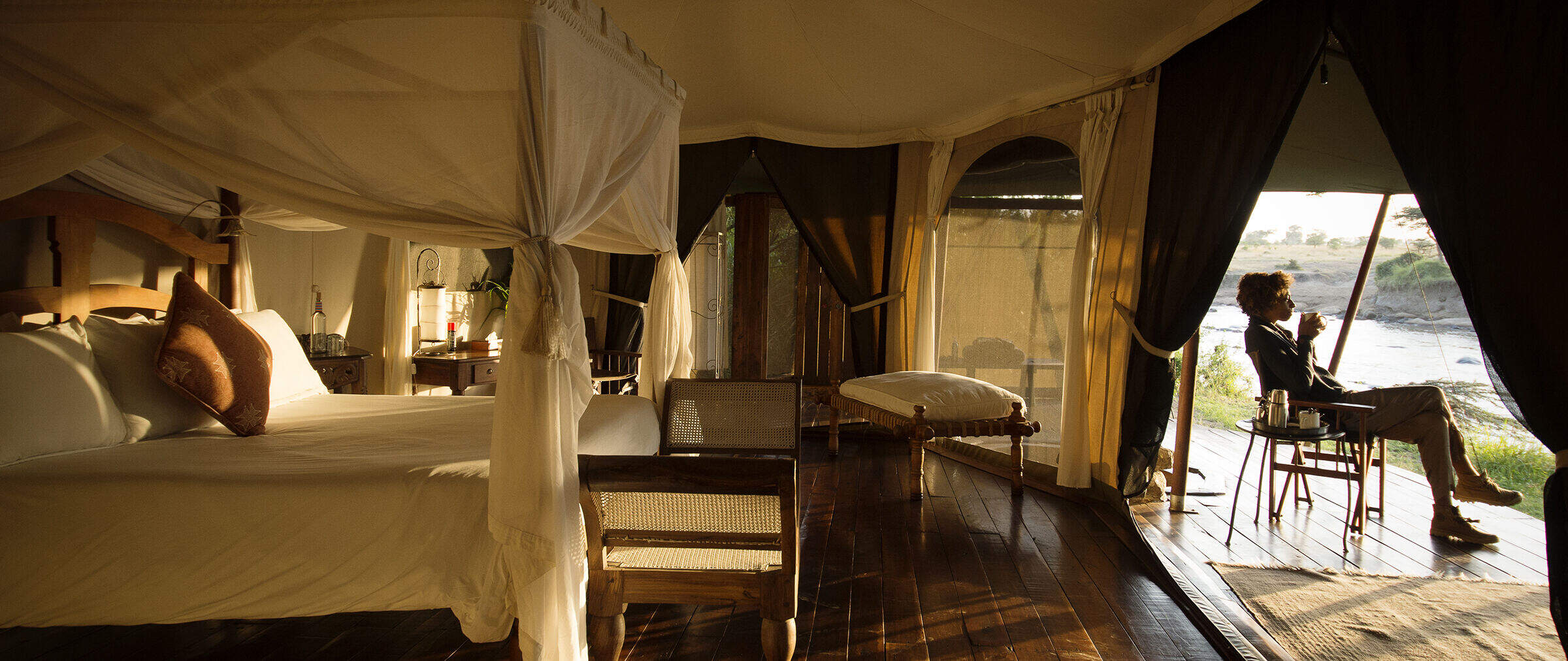
Ngare Serian
The luxurious Ngare Serian and its sister camp Serian face each other across the Mara River on the western side of the Mara North Conservancy
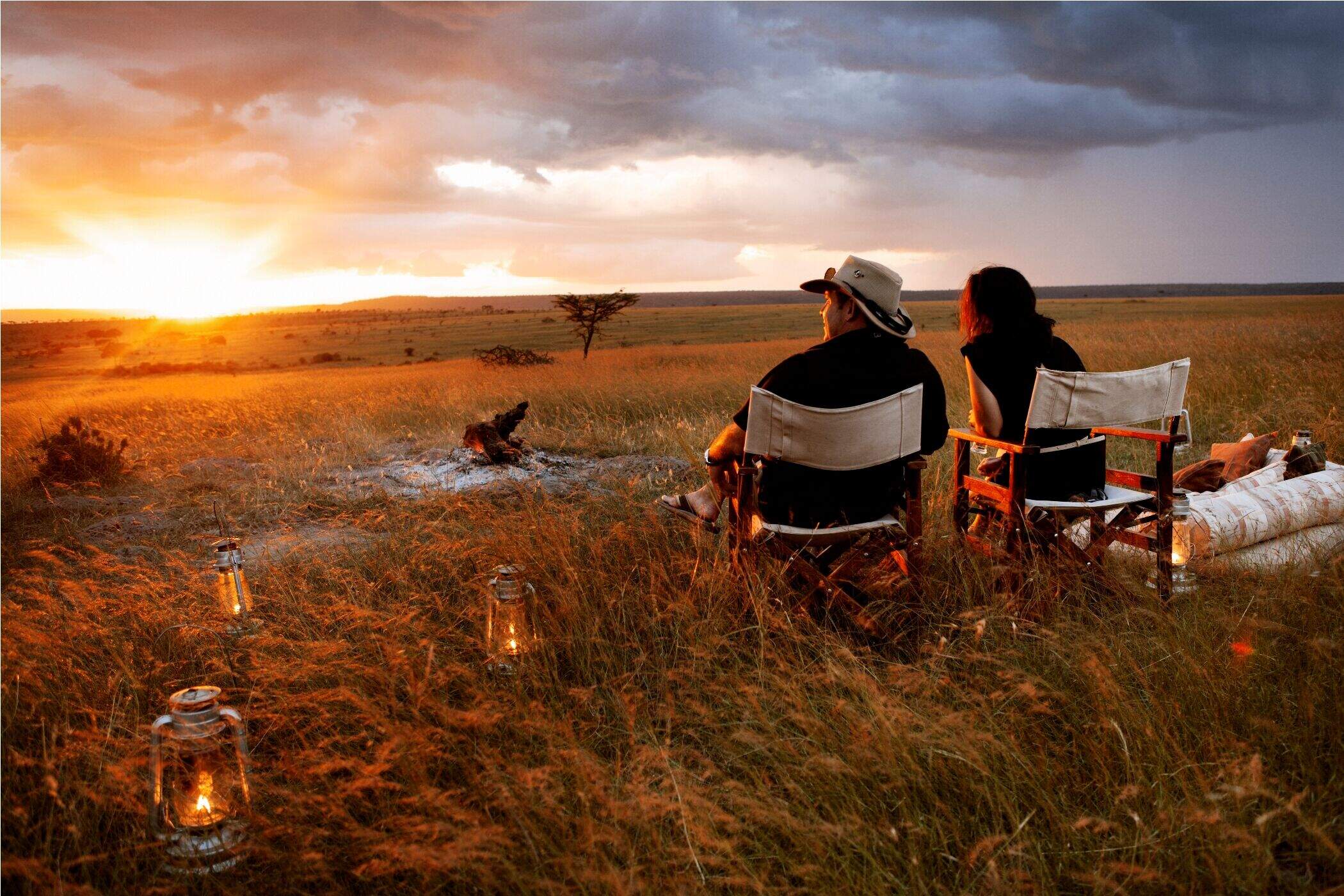
Karen Blixen Camp
Karen Blixen Camp sits on a meander of the Mara River in the Mara North Conservancy, just beyond the northern boundary of the Maasai Mara National Reserve.

Cottars 1920s Camp
Cottar's 1920s Camp is a classic, luxury tented camp with a 1920s safari theme, located in its own conservancy on the southeast border of the Maasai Mara National Reserve.
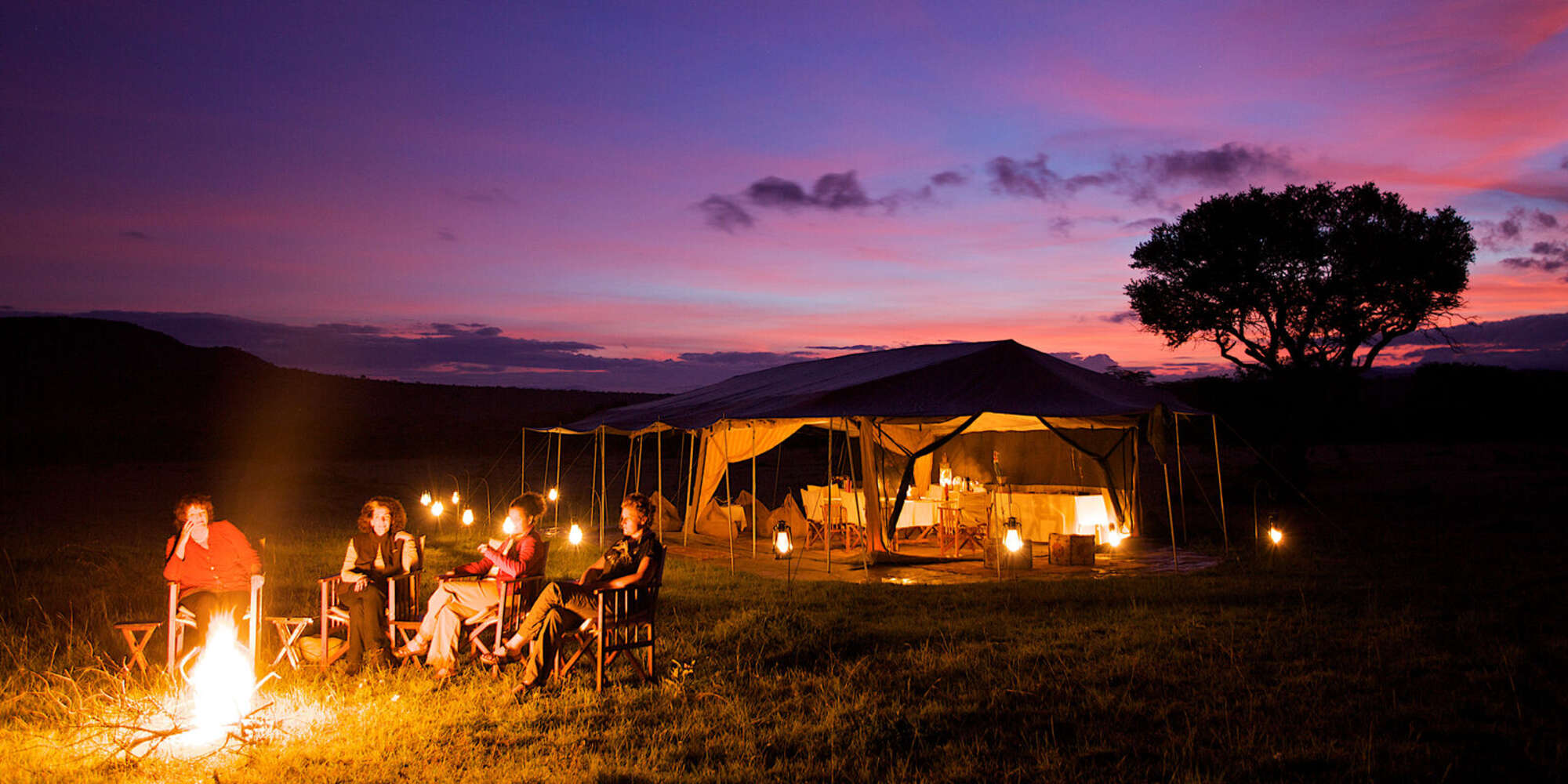
Leleshwa
Leleshwa was a delightful, boutique safari camp on the picturesque banks of a tributary of the Talek, with an extensive, little visited game area on its doorstep.
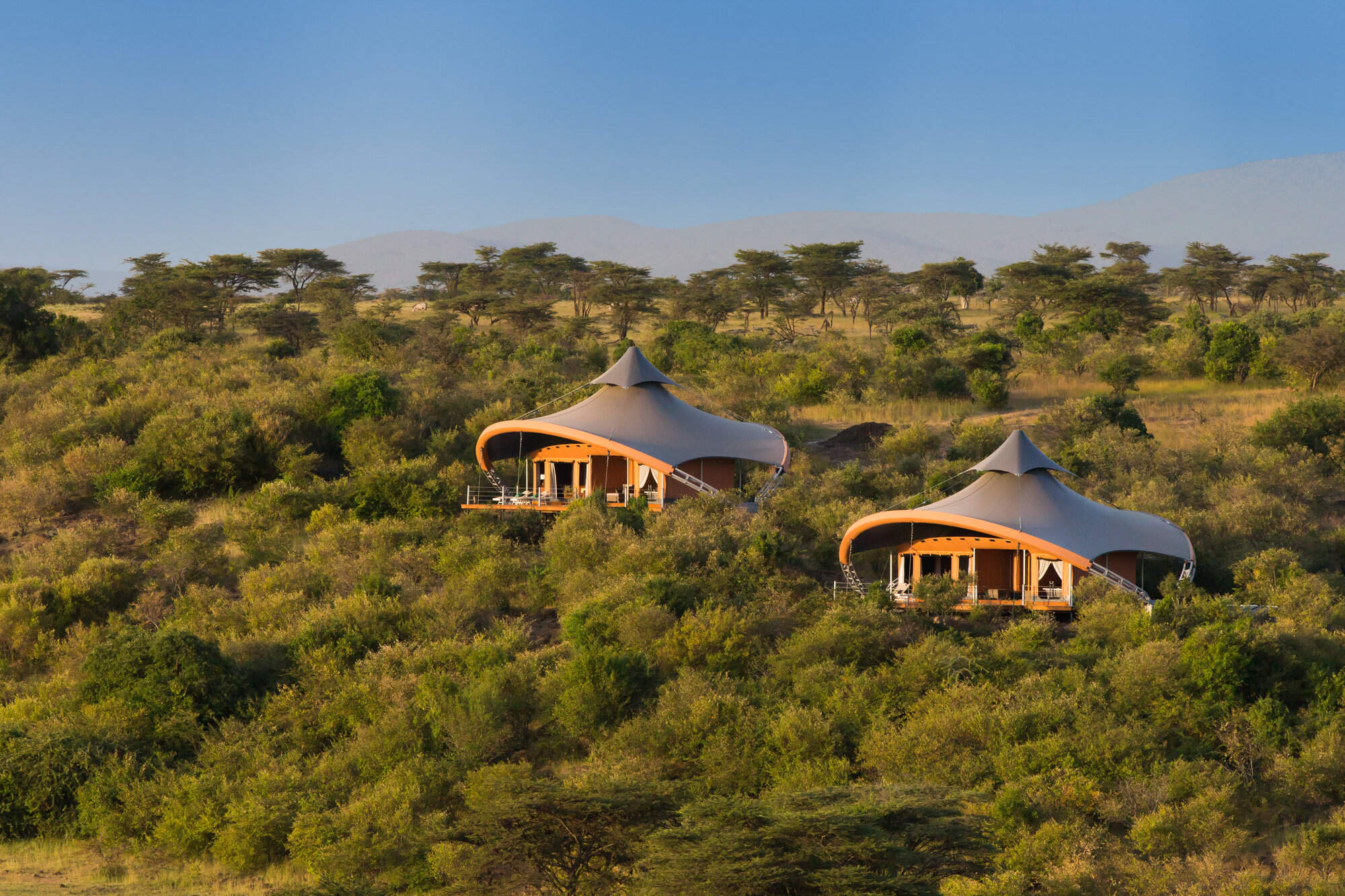
Mahali Mzuri
Mahali Mzuri is a strikingly modern tented camp in the Virgin Limited Edition group, in a remote part of the Mara ecosytem's Olare Motorogi Conservancy. It has lovely views and all the luxuries of a five-star hotel.
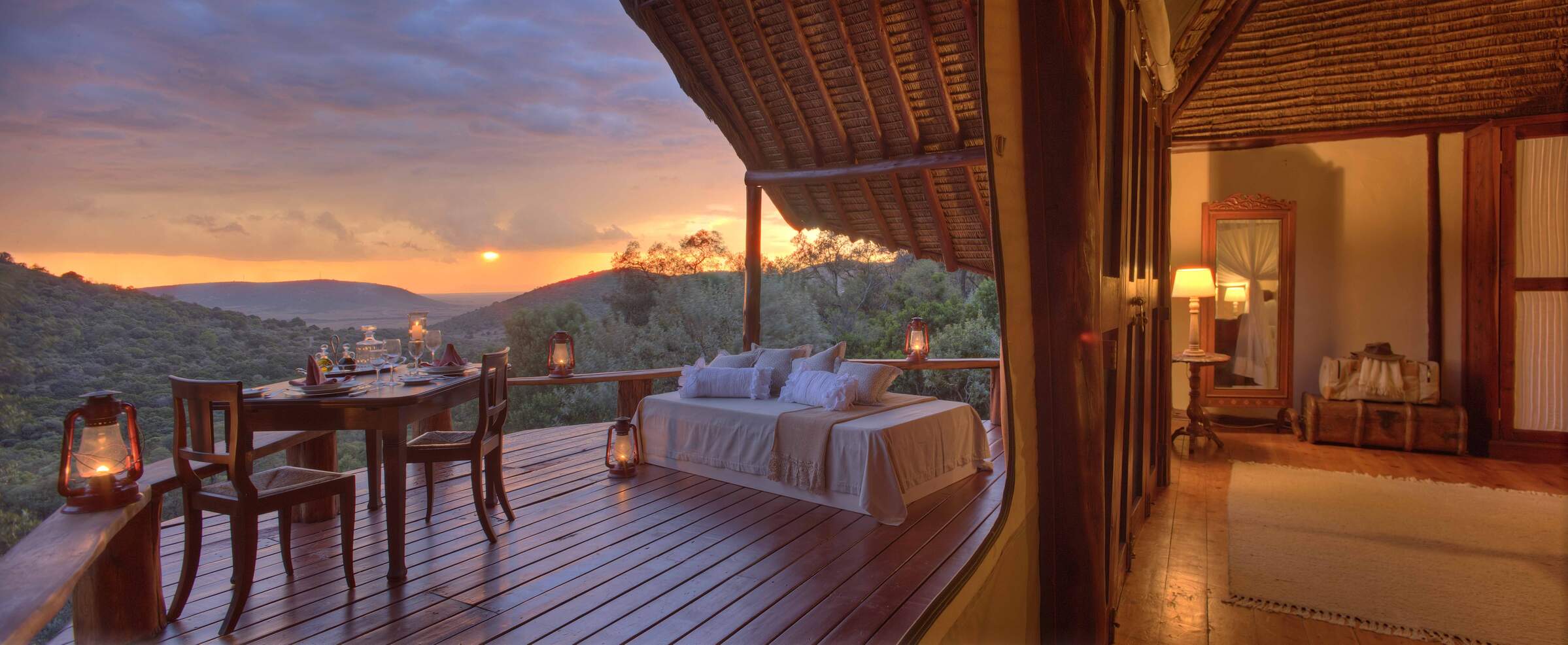
Saruni Mara
Saruni Mara is a luxurious permanent lodge, on the remote northern edge of the Mara North Conservancy, with stunning views, good guiding and very private and comfortable rooms.
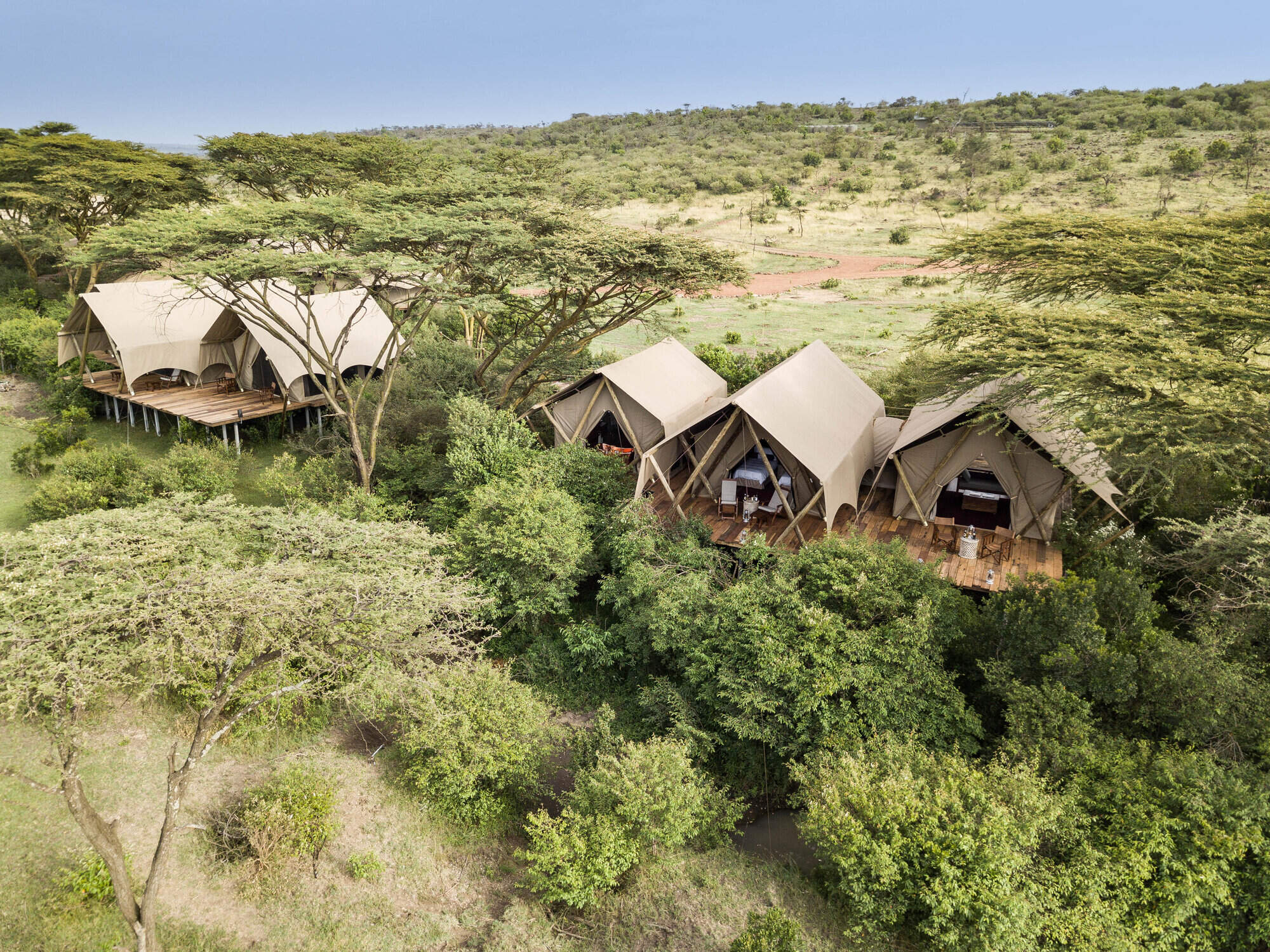
Mara Nyika
Mara Nyika is one of the newer additions to the Naboisho Conservancy and offers a luxurious and exclusive safari.
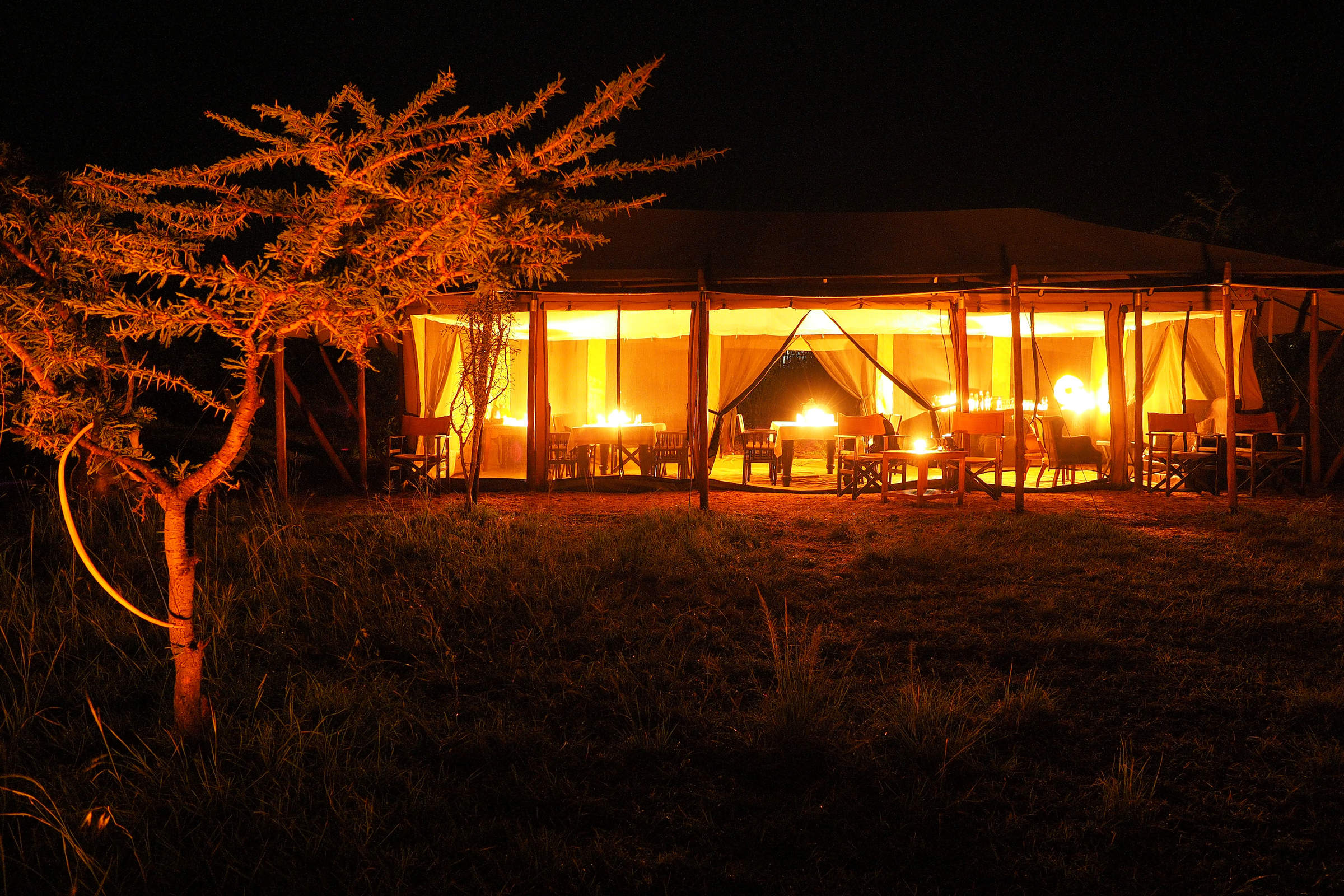
Basecamp Wilderness
Basecamp Wilderness Camp is a simple, traditional tented camp, set in a remote valley in the Naboisho Conservancy in the Mara ecoystem.
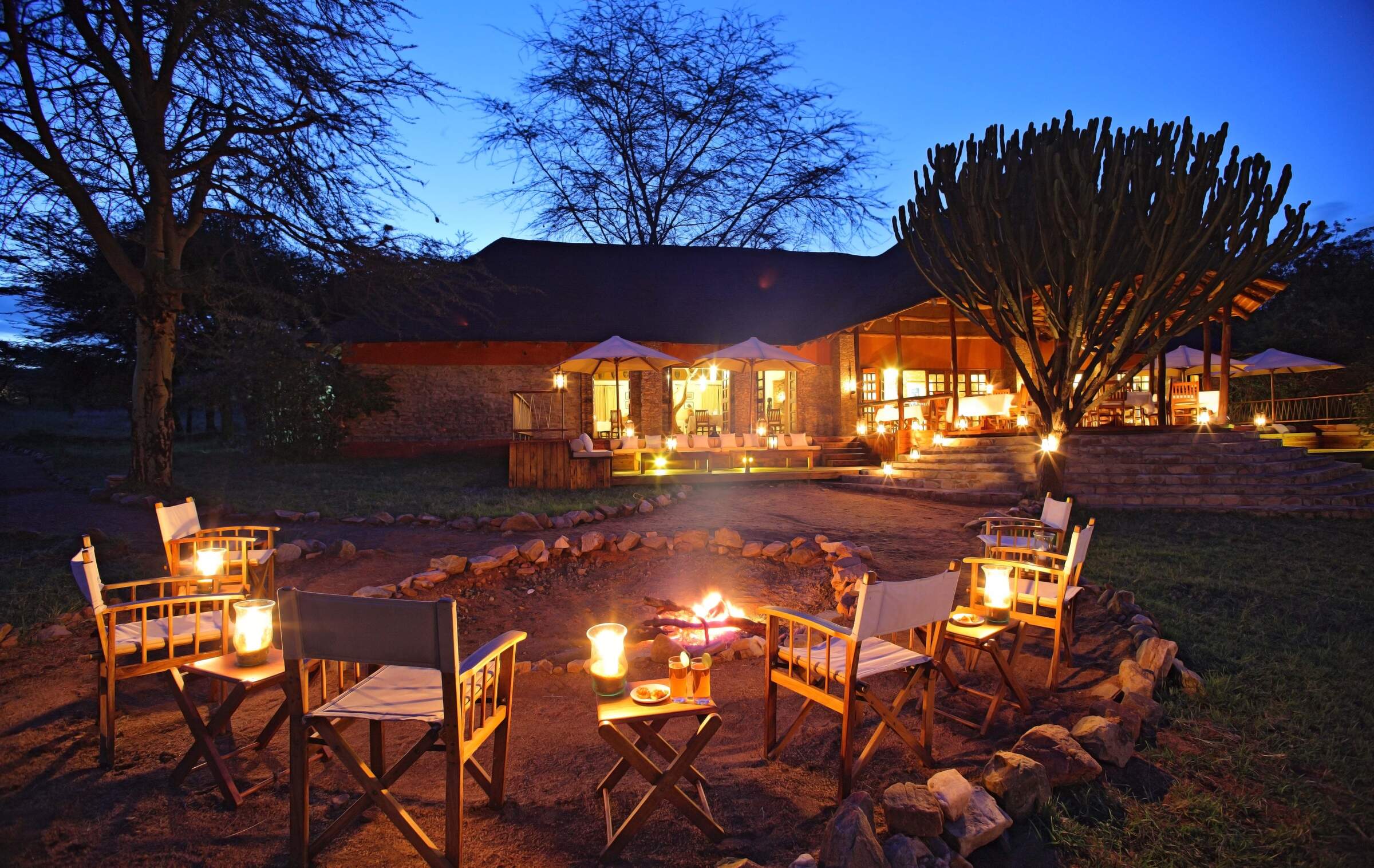
Mara Bushtops
Mara Bushtops is a luxury safari hotel on a private concession, outside the Maasai Mara National Reserve, with the emphasis on comfort, relaxation and good food and wine.
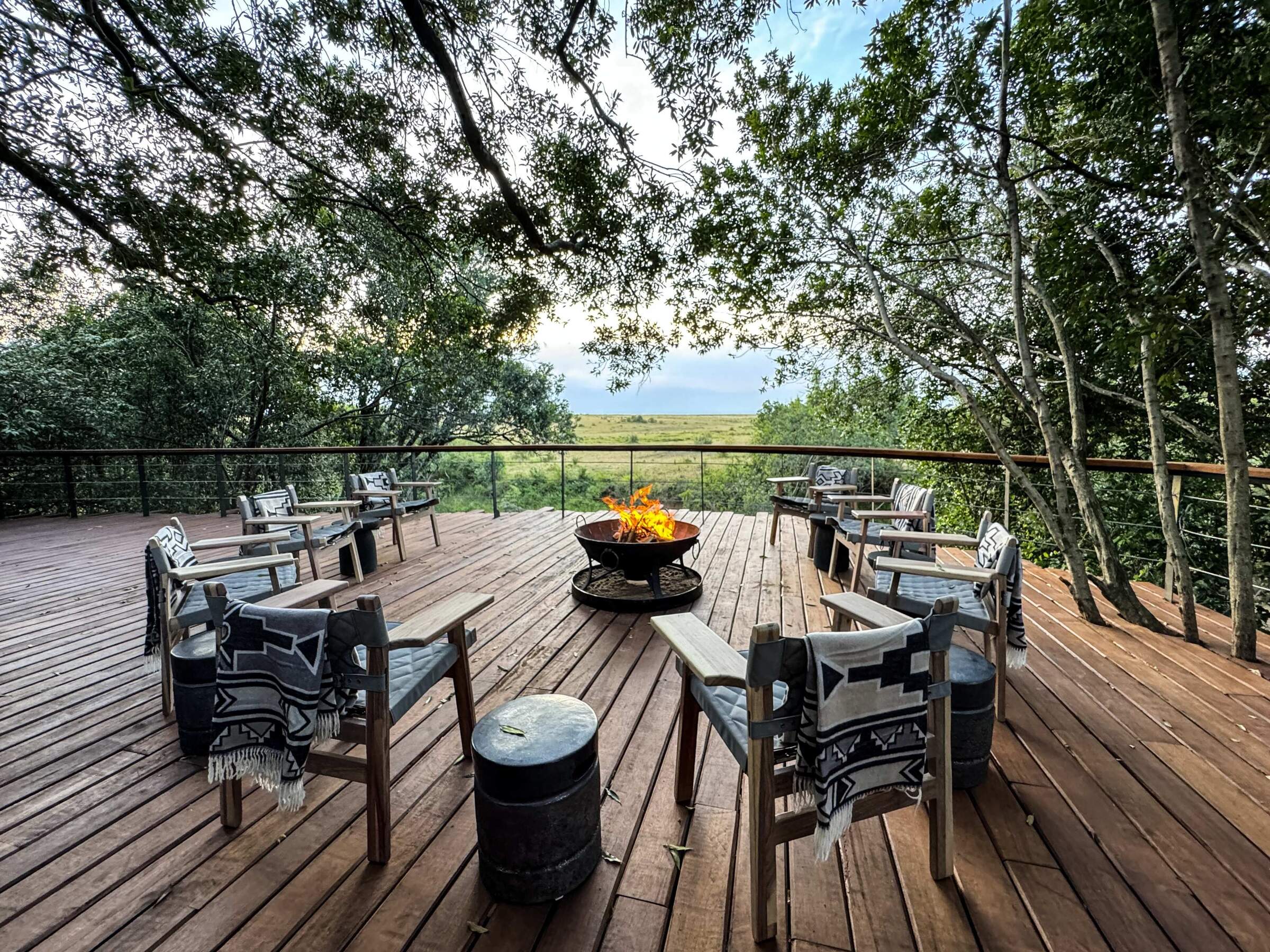
Mara Toto Tree Camp
Mara Toto Tree Camp is located on a wooded bend of the Ntiakatek River, 1km south (as the pied crow flies) from its sister camp, Mara Plains. It's the offspring of the original "Mara Toto" which was swept away in floods.

Cottars Private House
Cottar's Private House is one of the few truly luxurious, modern private houses in the Mara ecosystem, spoiling its guests with first-rate staff, a swimming pool and wonderful views.
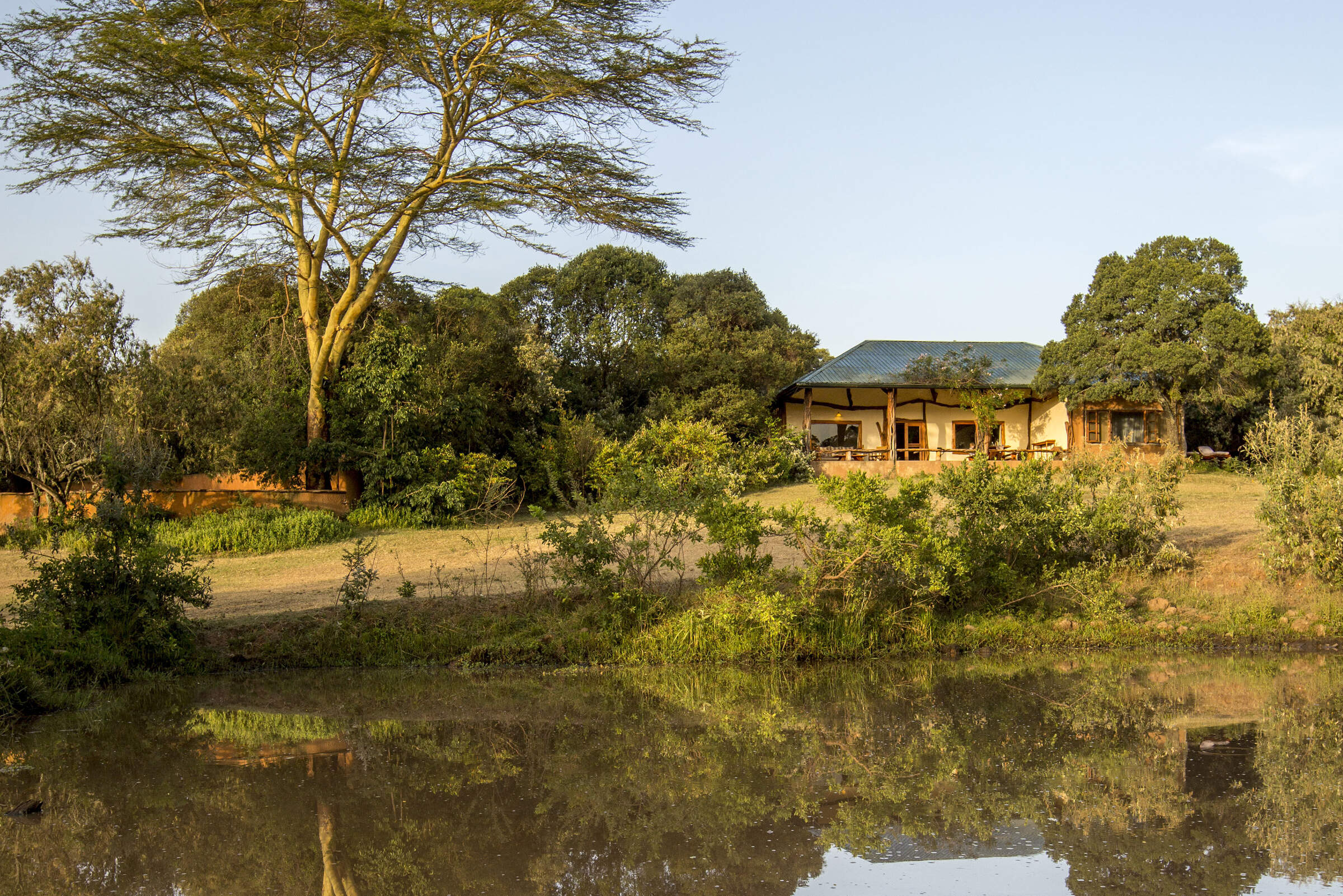
Basecamp Mara Houses
Basecamp Mara Houses consists of three private houses located in the northernmost part of the Mara North Conservancy.
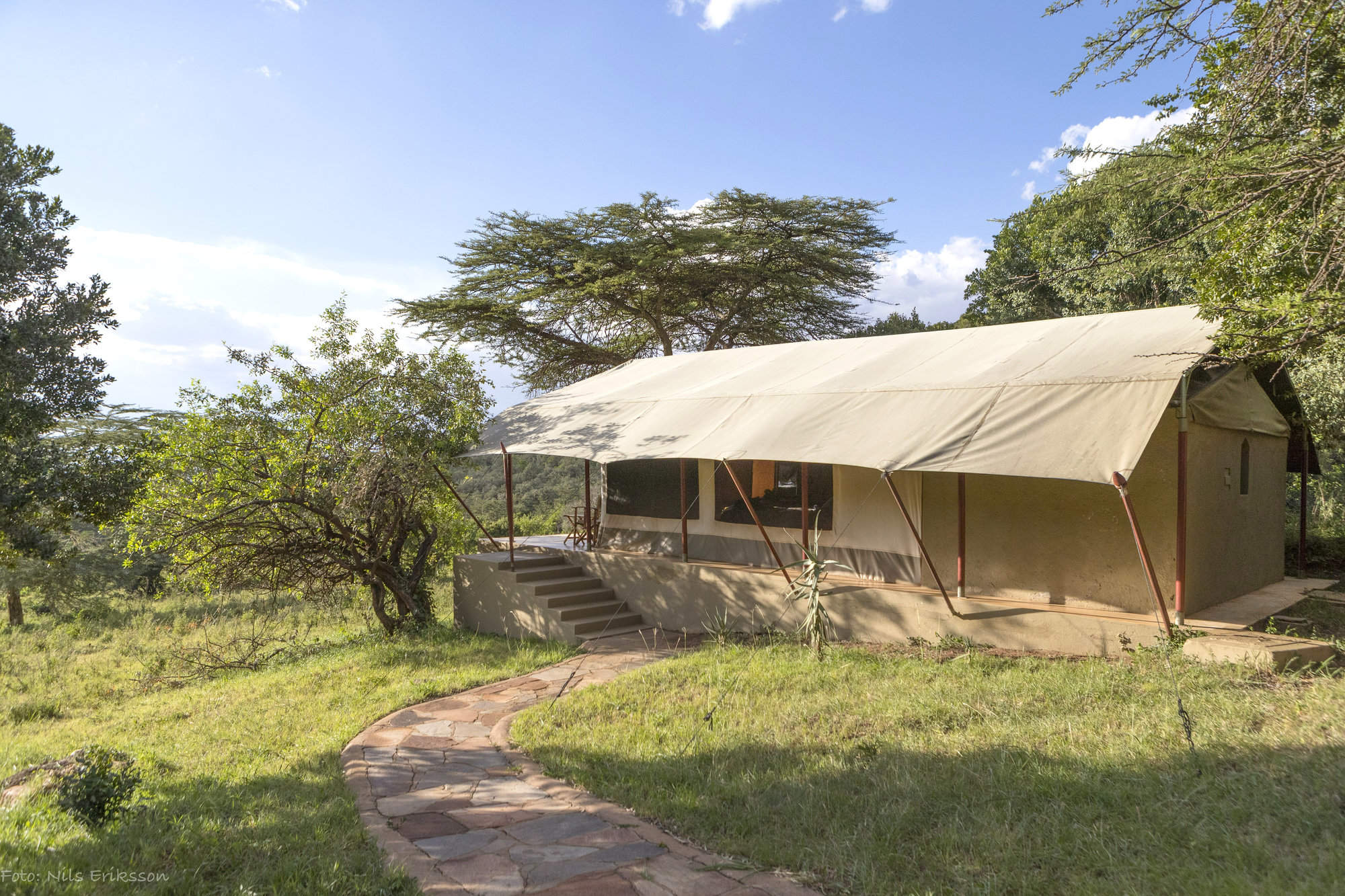
Entumoto
Entumoto is a high-end tented camp, with a swimming pool, situated in a very pretty location on the east side of the Maasai Mara ecosystem.
Our travellers’ wildlife sightings in Mara Conservancies
This is their success for sightings in Maasai Mara Conservancies. Click on a species for more detail. How we work this out.

100% success

100% success

99% success

99% success

98% success

98% success

98% success

97% success

92% success

90% success

75% success

10% success

8% success

6% success

2% success

1% success
When to go to Maasai Mara Conservancies
Our month by month guide: What it's like to visit Mara Conservancies in Kenya
Jan
Feb
Mar
Apr
May
Jun
Jul
Aug
Sep
Oct
Nov
Dec
Kenya in January
Clear, hot days and warm nights make this high season a popular time for safaris and it’s also good for diving and snorkelling as water clarity is excellent and gets better as the dry season progresses. Most lodges and tented camps treat January after the New Year week is over, as mid-season, making it a good compromise in terms of value for money with reasonably reliable, dry weather and some greenery left in the landscape.
Expert Africa bases its description of climate and weather in January, like the other months of the year, on the climate records of roughly the last 100 years, and it's fair to say that the weather and seasons since the beginning of this century have been highly irregular and unpredictable.
- On average, January is the second driest month of the year
- Elephants dig waterholes in the dry riverbed in the Samburu reserve.
- Wildebeest and many antelope have their calving season, to February.
- Migrant birds are seen in huge numbers, especially in the Rift Valley.
- Sea water clarity around the coral reefs generally good.
Our view
Fantastic: the very best time to visit
Weather in January
Kenya in February
With the short dry season well established, the grass grazed down and wildlife gathering close to water points, this is still a good time for a safari. Good water clarity in the Indian Ocean's coastal waters makes for excellent diving and snorkelling conditions.
Expert Africa bases its description of climate and weather in February, like the other months of the year, on the climate records of roughly the last 100 years, and it's fair to say that the weather and seasons since the beginning of this century have been highly irregular and unpredictable.
- On average, February is the driest month of the year.
- It’s sometimes possible to swim with whale sharks at Diani Beach.
- Migrant birds are still seen everywhere, especially near water.
- This is usually peak calving season for wildebeest and many antelopes.
- This month is often the hottest of the year, especially on the coast.
Our view
A very good time to visit
Weather in February
Kenya in March
Hot, increasingly humid weather – with good diving and snorkelling conditions at the start of the month – gives way to rains and lower accommodation costs. Expert Africa bases its description of climate and weather in March, like the other months of the year, on the climate records of roughly the last 100 years, and predicting the seasons since the beginning of this century has been difficult.
March is the month when – traditionally – intensely hot conditions build up until a cloudburst finally happens at the end of the month or in early April, to relieve the humidity. As ever, regional variations across the country can greatly impact on visitors' experiences.
- Sea-water clarity is best for diving before the long rains start.
- Visitor numbers are low, though the Easter holidays can be busier.
- Night skies can be scintillatingly clear in early March.
- Cropped down savannah grasses can make it easier to see the wildlife.
- Temperartures climb high, especially at lower elevations.
Our view
A good time to visit, with pros & cons
Weather in March
Kenya in April
April sees the full onset of the southeast monsoon wind or kusi, which heralds the long rains. Temperatures drop soon after the rains are established and you’ll often have facilities largely to yourself in this more affordable low season, sometimes known as the "green season". The bush quickly springs to life, with greenery sprouting almost before your eyes. While you're likely to get a fair number of heavy showers, the breaks in the rain can yield sparklingly clear conditions.
With the dust settled and bright sun piercing the clouds, conditions can be sublime for photography, especially first thing in the morning or in the late afternoon with another storm brewing. You may be lucky, or you may find conditions very wet and muddy.
- A wet month, the coast often gets more than 300mm (12in) of rain.
- Sunny spells can provide great light for photography.
- Buffalo and zebra calving season often happens in this month.
- Baby crocodiles hatch, for example on Central Island in Lake Turkana.
- Palearctic migrant birds gather to fly north to breeding grounds.
Our view
A time to avoid if possible
Weather in April
Kenya in May
While game viewing can be trickier as vegetation runs riot, between the cloudbursts the colours and light are great for photography at this time of year. Expert Africa bases its description of climate and weather in May, like the other months of the year, on the climate records of roughly the last 100 years, and while it's reasonable to expect heavy rains in many parts during this month, especially on the coast, the rains don't always come evenly or in some areas come at all.
In an El Niño year, the so-called long rains that normally are established across much of the country by May can be meagre, to the despair of farmers. On the other hand in a La Niña year, the long rains can bring floods. On the coast, the monsoon winds make the climate much more predictable, with heavy rains common throughout this month.
- Frogs breed in the ponds in the Arabuko Sokoke Forest near Watamu.
- Wildebeest, impala and other grazers are in rut (the breeding season).
- Kilimanjaro looks its best as heavy rain falls as snow on the summit.
- There's a sharp peek of rainfall on the coast with many rainy days.
- Accommodation prices are uniformly low, while some camps close.
Our view
A time to avoid if possible
Weather in May
Kenya in June
The rains give way to cloudy, cooler weather, often making for comfortable conditions by the end of the month, especially in the highlands. Starting from mid-June or the beginning of July and running until the end of October, this is the high season, and accordingly has higher accommodation rates and – at least until early September – higher numbers of visitors.
While the early part of June can often be rainy on the coast, it can be a great time to go on safari, with fresh greenery, many young animals and good photographic conditions with clear air.
- The Taru Desert, inland from the coast, is carpeted with flowers.
- The Lake Turkana Cultural Festival is held in Loiyangalani.
- Madaraka Day (commemorating self rule) is 1 June.
- The annual Lewa marathon runs a course through the wildlife.
- The Diani Rules "sports" event rips up the rulebook at Diani Beach.
Our view
A good time to visit, with pros & cons
Weather in June
Kenya in July
Kenya’s “winter" season sets in (winter is a misnomer but locals feel the change), and the highlands can be rather grey. Skies are often cloudy and the days can be surprisingly cool, with an average daytime high in many highland safari areas of 15-20°C and night-time temperatures dropping below 10°C in Nairobi and the highlands. Lower parts of the country and the coast are usually warm and dry, typically reaching highs of around 25°C with lows in the high teens.
As this is the start of the high season, coinciding with the usual arrival of the wildebeest migration in the Maasai Mara, July is a busy month. Ask your Expert Africa specialist to advise on how to avoid the crowds, which is not that difficult to do.
- The wildebeest migration usually reaches the Maasai Mara in July.
- Simbi Lake (Kisumu) and Crater Lake (Naivasha) can attract flamingoes.
- Watersports start to pick up and some surfing is possible at Malindi.
- Afternoon thunderstorms are a common feature in the Maasai Mara.
- The sea can be choppy along the coast, making diving difficult.
Our view
A good time to visit, with pros & cons
Weather in July
Kenya in August
The Great Migration fills the plains of the Maasai Mara, and school’s out, so the park roads are full of tourists – ask your Expert Africa specialist for advice on crowd avoidance tactics. Choose a private conservancy rather than a public national park or national reserve for quieter conditions.
Like July, August is generally mild and relatively dry in the safari areas, but it can be very chilly in the highlands, even in the middle of the day, and hail occasionally falls above altitudes of around 2,400m (8,000ft). Nairobi can be disappointingly overcast, with low cloud.
- Apart from Christmas holidays, this is the busiest month of the year.
- Late August sees peak wildebeest drama at the Mara River crossings.
- Coastal winds are good for kite- and wind-surfing.
- Few mosquitoes are around at this generally dry time of year.
- The annual Camel Derby takes place in the Samburu capital, Maralal.
Our view
A good time to visit, with pros & cons
Weather in August
Kenya in September
The skies clearing of cloud signals the start of hot, dry weather with little chance of rain – and, after the first few days of the month, far fewer visitors – making the latter part of September a good time for a quieter safari. While early September is often good for dramatic migration crossings along the Mara River, you might consider deliberately postponing your trip until later in the month, when the migration can still be very impressive and visitor numbers fewer.
If tourist surges are somewhat predictable, however, the patterns of the wildebeest migration are more volatile, and like all of Expert Africa's climate and weather assessments, they are based on accumulated years of experience rather than guaranteed certainty.
- This is still high season, with prices to match.
- Many river crossings take place on the Mara river in both directions.
- Natural bush fires flush out insects and small animals for predators.
- The Rift Valley Music Festival takes place by Lake Naivasha.
- With school holidays over by early September, late-month is quieter.
Our view
Fantastic: the very best time to visit
Weather in September
Kenya in October
Still hot, mostly dry and not too busy, this is many people’s preferred month for a safari, and it’s also good for diving and snorkelling. The wildebeest and zebra herds of the great migration are often still to be seen, though in dwindling numbers. The swamps of Amboseli attract thirsty wildlife including large herds of elephants.
While we wouldn't expect much rain across most of the country this month, the climate has become so unpredictable that you can never say never, and the possibiity of the short rains – usually associated with November to mid-December, starting early, can't be discounted.
- This month sees the tail end of the great migration in the Mara.
- Palearctic migrant birds start to arrive, staying until March.
- Turtle nests hatch at Watamu, until November.
- Amboseli elephants focus on the swamps for their daily water.
- The Indian Ocean monsoon winds turn from southeast to northeast.
Our view
A very good time to visit
Weather in October
Kenya in November
The northeast monsoon wind or kaskazi heralds the start of the “short rains", usually some time in the second half of the month. From November to mid-December, this is the low season, and accordingly has lower accommodation rates and lower visitor numbers. Across most of the country you can expect warm, somewhat cloudy weather, with occasional heavy showers and localised flooding.
Expert Africa bases its description of the climate in November, like the other months of the year, on the records of roughly the last 100 years, and it's fair to say that the seasons since the beginning of this century have been highly irregular and unpredictable: some years the short rains don't come at all, or don't reach every part of the country. In an El Niño year, the November short rains can be very heavy, but in a La Niña year, they can fail completely.
- Swimming with dolphins in Lamu can be done from now until April.
- Birders gather at Ngulia in Tsavo West to ring Palearctic migrants.
- The Lamu Cultural Festival takes over the town and Lamu Creek.
- Agricultural shows often take place regional market towns.
- This is low season, so camps can be great value, with special offers.
Our view
A good time to visit, with pros & cons
Weather in November
Kenya in December
In a typical December, the rains usually finish by middle of the month, leaving the landscape looking its best, under clear blue skies, and heralding the start of the second peak tourist season from around 20 December to the first week of January. Our assessment of the likely weather in December, like the other months of the year, is based on climate records, and it's fair to say that the seasons since the beginning of this century have been highly irregular and unpredictable.
Christmas can sometimes be wet, but most years the rains have finished a week or two earlier, with the festive season ushering in the perfect combination of clear skies and sunshine by day and starry nights.
- Christmas and New Year are busy, with the lodges and camps full.
- Rates are highest after 24 Dec, with supplements on public holidays.
- Republic Day and Independence day are celebrated on 12 December.
- Good kite- and wind-surfing restarts, with strong northeasterly winds.
- Mango season begins, providing excitement for primates and elephants.
Our view
A good time to visit, with pros & cons
Weather in December
Maasai Mara Conservancies: In detail
Maasai Mara Conservancies
The conservancies are exclusive to their guests and the limited number of camps in each conservancy can organise bush walks and night drives, neither of which is possible in the National Reserve. The conservancy camps are still able to take safari visitors into the National Reserve, and most camps in the conservancies include a full day in the reserve for each three-night stay – a particularly popular option during migration season. It doesn’t work the other way round: most conservancies do not permit casual visits to safari travellers staying in the big camps and lodges in the national reserve or clustered around its boundaries.
Expert Africa offers a selection of safari camps both inside the National Reserve and outside it in the exclusive conservancies. Remember that none of these areas are fenced. The Mara region’s few fences are used to keep people and livestock safe rather than to enclose the free-roaming wildlife.
Safaris in Mara Naboisho Conservancy
Mara North Conservancy Safaris
Safaris in Olare Motorogi Conservancy
Ol Kinyei Conservancy Safaris
Ol Derikesi Conservancy Safaris
Safaris in Siana Group Ranch
Going on safari in the Mara conservancies
Most of the camp staff in the conservancies come from the region’s Maasai community. In the case of one or two camps, staff are drawn exclusively from local Maasai villages – or enkang – of huts constructed by hand from mud, straw and cow dung (with the odd concrete, tin-roofed building) encircled by cut thorn bushes to deter predators from taking livestock at night. Much more than in the reserve camps and lodges (where staff tend to be recruited by head office HR departments and posted to the Mara), you’re likely to have close contacts with Maasai people on a daily basis, adding an illuminating cultural thread to your safari. Nearly all the conservancy camps offer optional ‘cultural visits’ to one of their nearby Maasai villages, often accompanied by staff who live there. A fee of about $20 per person is payable locally.
Activities in the conservancy camps are not just vehicle-based. While the national reserve only permits visits in vehicles, the conservancies are on privately owned land and they make their own, more flexible rules based around small numbers of visitors and concepts of close supervision and good local knowledge. All the conservancy camps have their own specialist, 4WD game-drive vehicles, but you’ll find bush breakfasts, lunches and dinners are more common than inside the reserve (and obviously you get out of the vehicle for these), while one or two camps have mountain bikes.
Bush walks in the conservancies are increasingly popular and split into two different styles. Most are accompanied by one or two armed escorts who carry light firearms. Guides, escorts and guests walk in a group, and deliberately follow established routes through open areas with good visibility and very limited likelihood of encountering dangerous wildlife. In one or two camps, bigger caliber weapons are available and guests can then be guided through denser bush. On these walks, a spotter with binoculars scouts ahead and lets the party know that it’s safe to proceed. A popular bush walk plan is to leave from camp at dawn by 4WD, with breakfast and a camp kitchen packed in the vehicle. You’re then dropped off to walk for a couple of hours, while the vehicle drives on to the breakfast spot where you meet up later. You then drive back to camp after breakfast – or walk back if the route is suitable.
The other conservancy activity that is not permitted in the reserve is night game drives. Night falls early – and very quickly – in Kenya (sundown varies through the year between about 6.30pm and 7pm in the Maasai Mara) and nocturnal wildlife starts to become active from around 6pm onwards. A typical night game drive follows on naturally from a late afternoon game drive. You stop at the camp’s favourite sundowner spot at around 6.15pm and have a drink and some nibbles as the sun plunges below the horizon. In darkness, you then set off back to camp very slowly with the spotter directing the spotlight. Camps are increasingly switching from white lights to orange or red lights, which are much less stressful for wildlife. Depending on what you’ve requested in advance, you might get back to camp for dinner at about 8pm. Alternatively, you can often do a later night drive, setting off after an early dinner. Most conservancies require camp vehicles to be back in camp by 10pm.
Map of Maasai Mara Conservancies
Choices for where to stay in Maasai Mara Conservancies
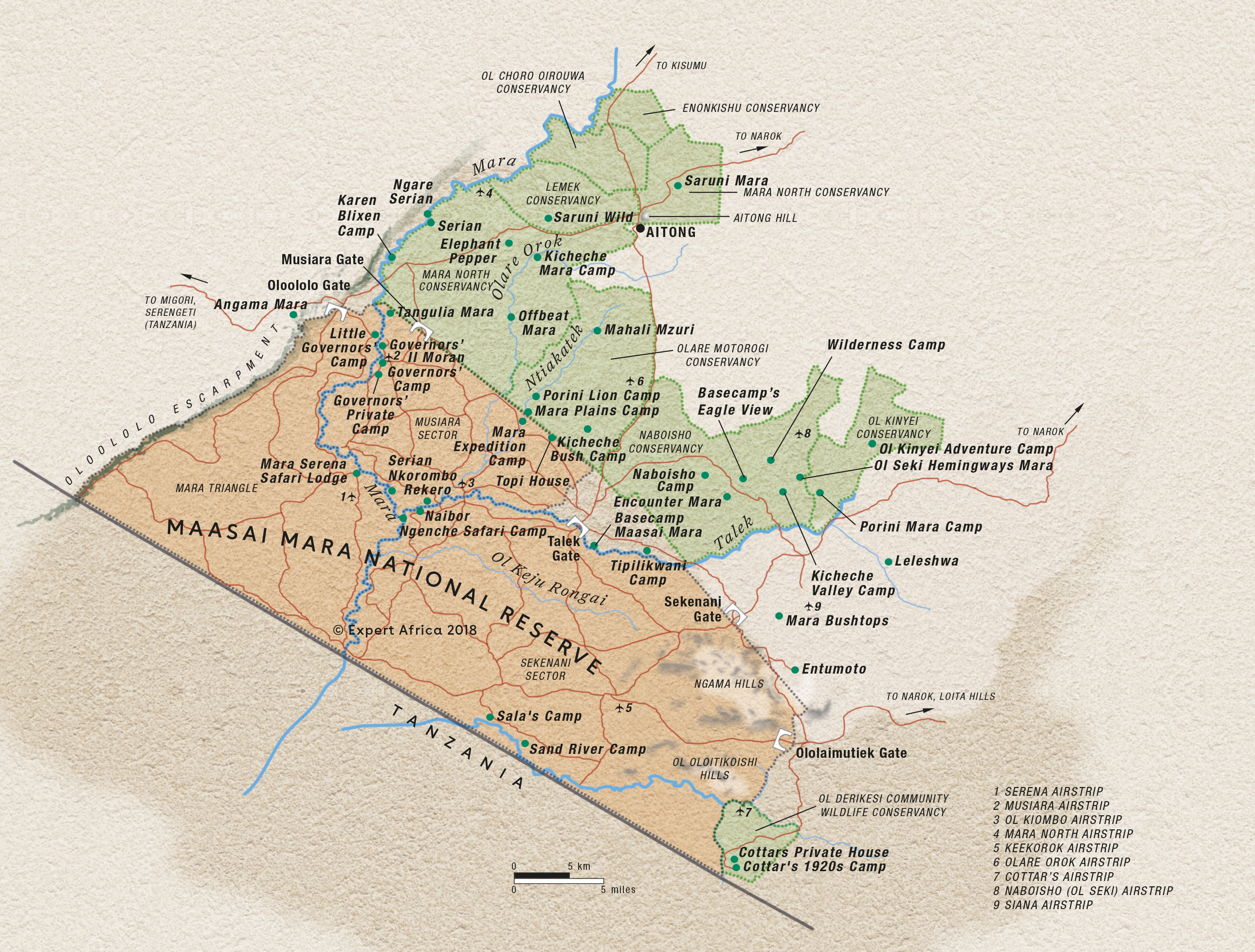
Maasai Mara Conservancies: Safaris
The private conservancies on Maasai land around the edge of the Maasai Mara National Reserve are a relatively recent phenomenon and have become hugely successful in terms of wildlife conservation, community engagement and visitor experience. These are areas where, unlike the reserve itself, visitor numbers are strictly limited; there are no more than 12 tents per camp; and there's a minimum of 3km² of wildlife-viewing conservancy land per tent. Most of the time, you will have the bush and the animals to yourself and, unlike inside the reserve, you can do night game drives and bush walks.
These areas feel to us like the future of wildlife conservation, and the big mammals now flooding out of the reserve into the wider dispersal area – including elephants, large prides of lions and other big cats, giraffe and a host of plains grazers – seem instinctively to agree.

Purple Grenadier Fly-In Safari
6 days • 2 locations
NAIROBI AIRPORT TO NAIROBI AIRPORT
Fantastic guiding from intimate, well-run mid-range tented camps, in superb conservancy locations: this safari is all about making the most of the incredible wildlife in Laikipia and the Maasai Mara.
US$5,680 - US$7,130 per person

Striped Hyena Safari
5 days • 3 locations
NAIROBI AIRPORT TO NAIROBI AIRPORT
Just one example of a possible itinerary for keen walkers, this safari enables you to experience the sounds and sights of the bush, and its wildlife, in an unusually direct way.
US$5,700 - US$6,990 per person

Black Kite Fly-in Safari
10 days • 4 locations
NAIROBI AIRPORT TO NAIROBI AIRPORT
Explore Kenya in-depth with visits to Nairobi and Meru national parks, the Mara Conservancies and Amboseli. Nestled in remoter regions, four camps provide fantastic access to rich game, a range of activities and beautifully diverse landscapes.
US$10,000 - US$11,960 per person

African Finfoot Fly-in Safari
7 days • 3 locations
NAIROBI AIRPORT TO NAIROBI AIRPORT
After a unique start in Nairobi National Park, classic, luxurious camps combine for a high-end and exclusive safari in fantastic wildlife destinations.
US$11,230 - US$17,340 per person

African Hawk-Eagle Fly-in Safari
7 days • 2 locations
NAIROBI AIRPORT TO NAIROBI AIRPORT
Two luxurious camps provide relatively quiet game-viewing within Laikipia and the Mara ecosystem. Situated on private conservancies, both Lewa Wilderness and Naboisho offer the chance to sight all of the "Big 5" and to enjoy a range of safari activities.
US$9,360 - US$16,430 per person

Hamerkop Fly-In Safari
8 days • 2 locations
NAIROBI AIRPORT TO NAIROBI AIRPORT
Different wildlife, contrasting camps and a whole host of activities, this is a safari for those wanting to get out and about and not just sit in a vehicle.
US$7,120 - US$10,960 per person

Peregrine Falcon Fly-In Safari
6 days • 2 locations
NAIROBI AIRPORT TO NAIROBI AIRPORT
Discover two of Kenya’s quieter wildlife havens with visits to Meru National Park and Mara North Conservancy. Top-quality sister camps provide considerable comfort and a range of activities by which to explore the game-rich surroundings.
US$7,840 - US$8,980 per person
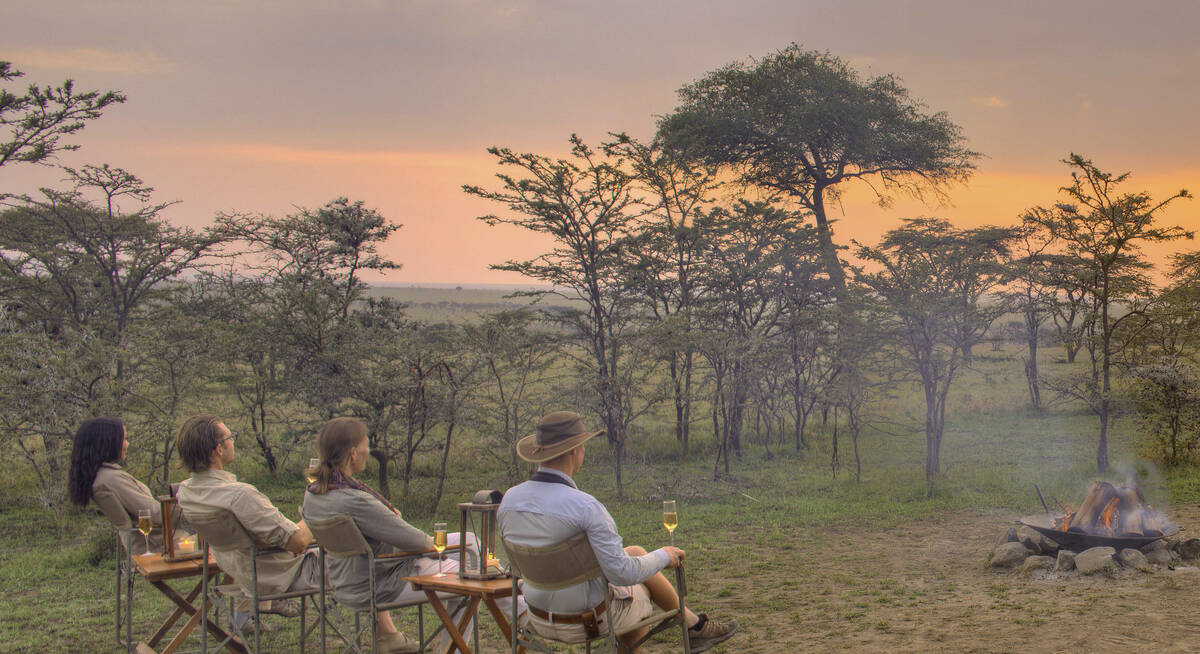
De Brazza Monkey Fly-in Safari
9 days • 3 locations
NAIROBI AIRPORT TO NAIROBI AIRPORT
Enjoy a range of activities in the remote wilderness of northern Kenya before exploring the wildlife-rich plains of the Mara ecosystem. Private vehicles and guides heighten the personalisation of this highly immersive safari.
US$13,540 - US$16,320 per person

Tawny Eagle Fly-in Safari
7 days • 2 locations
NAIROBI AIRPORT TO NAIROBI AIRPORT
Explore Laikipia and the Maasai Mara ecosystem with stays in the Ol Pejeta and Naboisho conservancies. Two smart yet authentically rustic bush camps provide a traditional safari experience, offering a high standard of guiding and excellent level of care.
US$4,560 - US$8,630 per person

Wahlberg's Eagle Fly-in Safari
6 days • 2 locations
NAIROBI AIRPORT TO NAIROBI AIRPORT
A great value safari in Laikipia and the Maasai Mara that provides an immersive, authentic bush camp experience with activities for families of all ages.
US$5,680 - US$6,450 per person
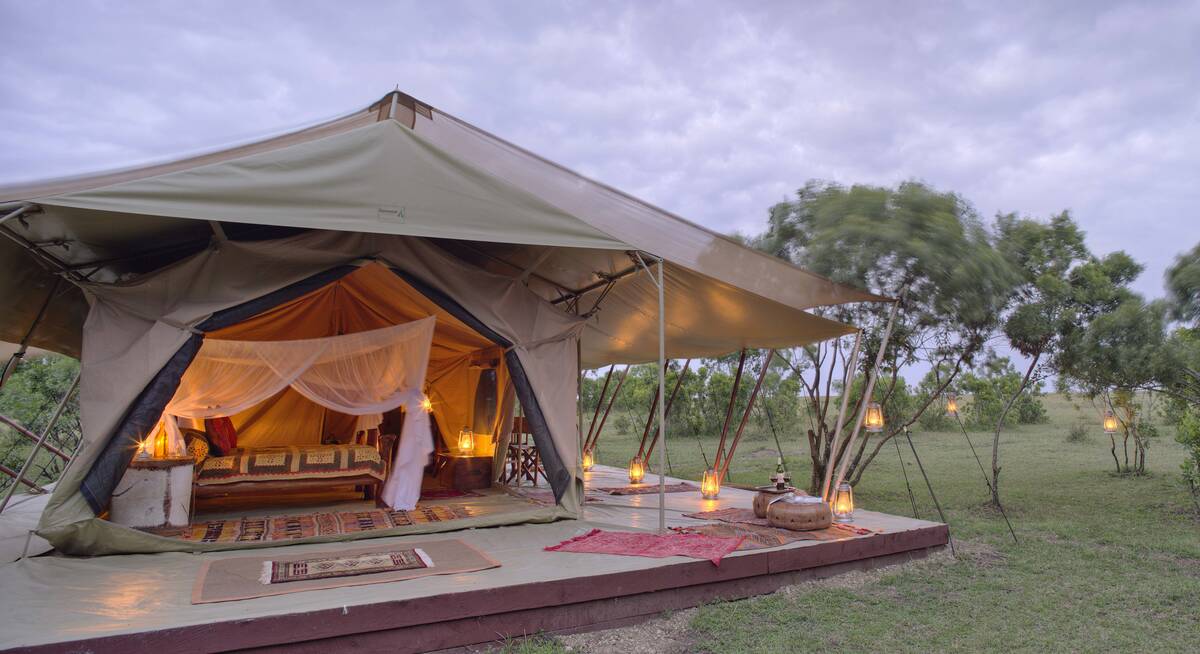
Lanner Falcon Fly-In Safari
8 days • 3 locations
NAIROBI AIRPORT TO NAIROBI AIRPORT
Three sister camps offer access to wonderfully remote regions across northern Kenya and the Maasai Mara ecosystem. Enjoy an exclusive safari experience focused on great wildlife, superb guiding and considerable comfort, with a range of activities.
US$7,140 - US$8,400 per person

Golden Weaver Fly-In Safari
6 days • 2 locations
NAIROBI AIRPORT TO NAIROBI AIRPORT
A rustic, adventurous week on safari with great community involvement that offers incredible value for money in two very different locations – the Amboseli and Maasai Mara ecosystems.
US$3,720 - US$3,720 per person
Our top 30 lodges and safari camps in the private Mara conservancies
Listed below are our recommendations for great places to stay in the various conservancies around the Maasai Mara – Mara North Conservancy, Olare Motorogi Conservancy, Mara Naboisho Conservancy, Ol Kinyei Conservancy and Ol Derikesi Conservancy. Ask us for more details of which camps are where, and what is likely to suit you best.

Kicheche Bush Camp
Kicheche Bush Camp is a smart and intimate tented camp with a relaxed atmosphere and the perfect base in the Mara for keen photographers.

Kicheche Mara
Kicheche Mara Camp has just ten tents and a rustic and comfortable feel. It is set by a stream in a pretty area of the Mara ecosystem's Mara North Conservancy.

Kicheche Valley
Kicheche Valley is a boutique tented camp in a wooded district of the Mara ecosystem's Naboisho Conservancy, with plenty of wildlife in the area.

Naboisho Camp
Naboisho Camp is one of the most luxurious of the handful of camps in the Naboisho Conservancy. It offers day and night game drives, game walks and full creature comforts in the bush.

Offbeat Mara
Offbeat Mara is a small traditional camp that appeals to safari traditionalists, located in one of the Maasai Mara’s quiet conservancies.

Encounter Mara
Encounter Mara is located in the private Naboisho Conservancy – a game-rich area of the Mara ecosystem – and offers a contemporary take on the traditional, low-impact luxury safari camp.

Elephant Pepper Camp
Elephant Pepper Camp is a small 10-tent bush camp, put together in the traditional "campaign" style, and including a large honeymoon/family tent.

Serian
Serian is a luxury tented camp on the east bank of the Mara River in the Mara North Conservancy. It is the sister camp of Ngare Serian, on the west bank.

Mara Plains Camp
Mara Plains is one of the very best camps in the Mara ecosystem. Located in the Olare Motorogi Conservancy, just outside the Mara reserve, it has access to three wildlife-viewing areas.

Kicheche Fly Camp
Kicheche Walking Wilderness Fly Camp is a temporaray dome tent camp set up for participants in Kicheche's two-day walking safari between Kicheche Valley and Kicheche Bush Camp.

Basecamp Eagle View
Basecamp Eagle View is a community-focused safari camp in the Naboisho Conservancy, with a strong emphasis on responsible tourism and a spectacular location.

Porini Lion Camp
Porini Lion Camp is a pioneering, community focused eco-camp, with excellent guides and game viewing, in the predator-rich, Olare Motorogi Conservancy.
Excursions in Maasai Mara Conservancies
Optional, extra day-trips and excursions that are possible while you’re staying in Maasai Mara Conservancies. Talk to us: these excursions are usually best arranged before you go.

Balloon flight over the Mara
3 hours in total - morning only
With the sun rising over the Loita Hills, you scramble into the balloon basket for the start of a once-in-a-lifetime experience. You’re about to go drifting with the breeze above the trees and plains of one of the world’s greatest wildlife regions.
More about Balloon Safari
Safari in Maasai Mara National Reserve
All day from sunrise to sunset
If you're not staying in the Maasai Mara National Reserve itself, you're likely to be staying in one of the outstandingly wildlife-rich Maasai-owned private conservancies just outside the reserve boundary. A full-day game drive in the reserve gives you the chance to visit the Mara River and see some of the reserve's fabled wildlife locations.
More about Maasai Mara Safari
Looking for inspiration on where to travel next?
Visit our trip chooser to explore your options and find inspiration for your perfect African adventure
Inspire me
